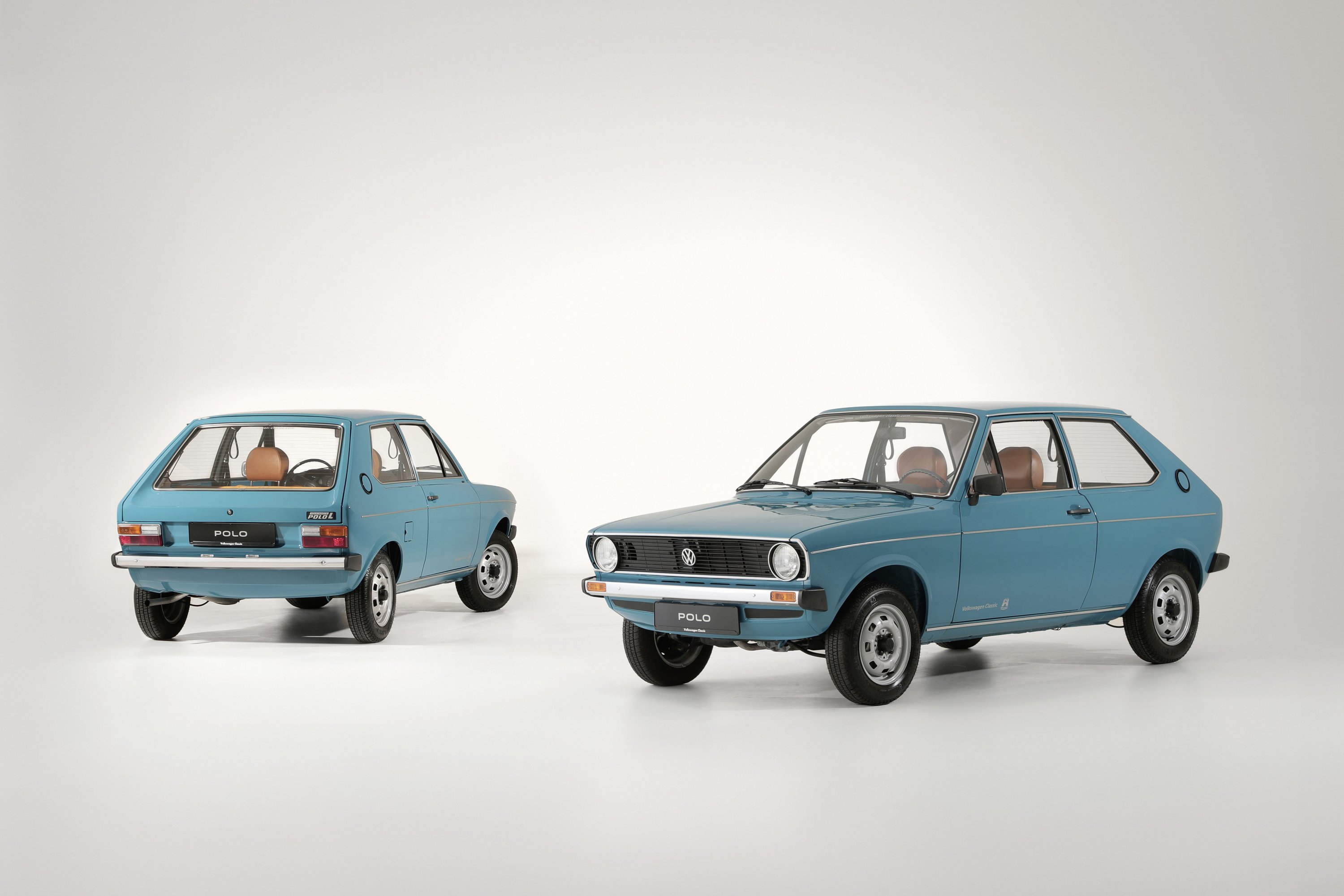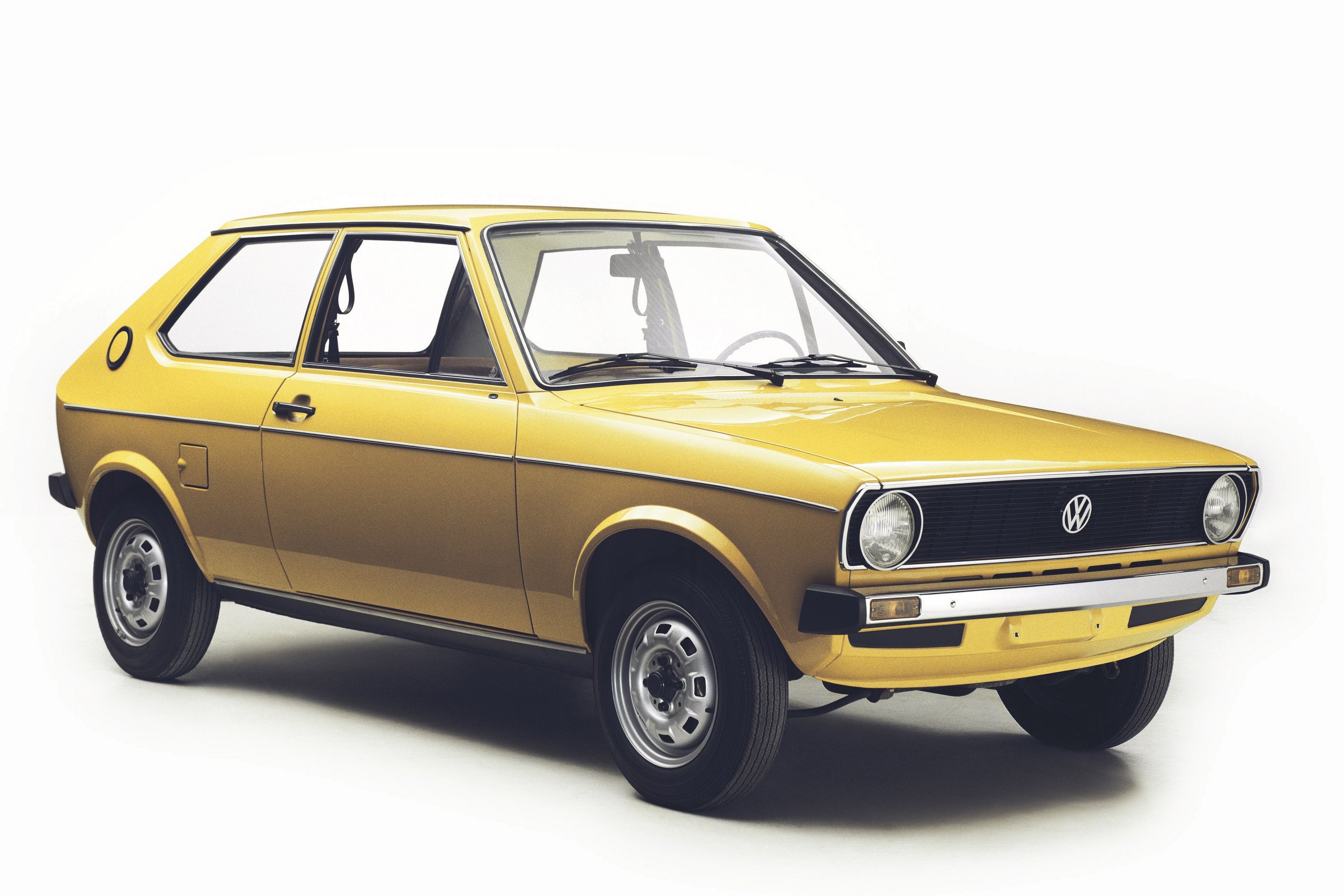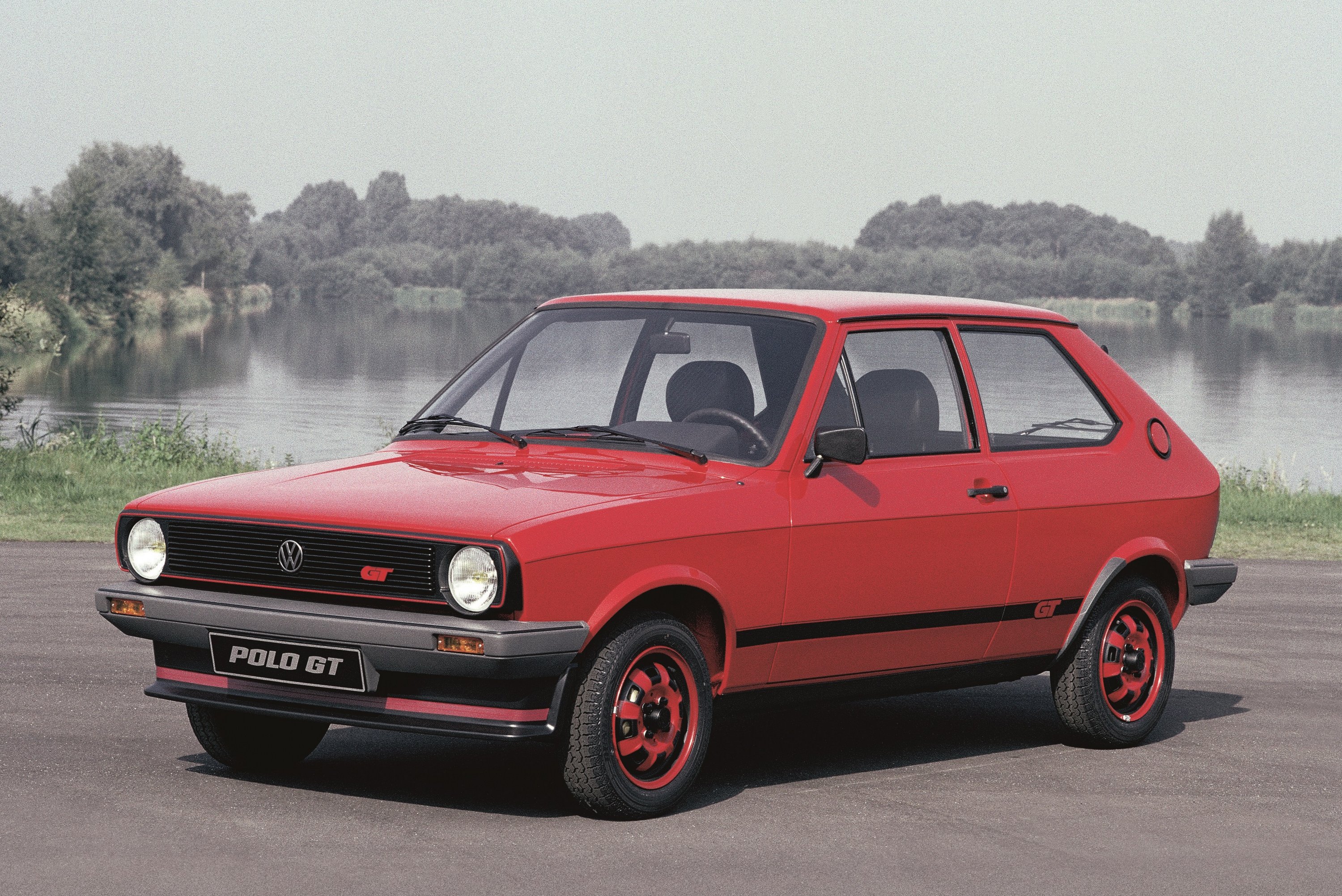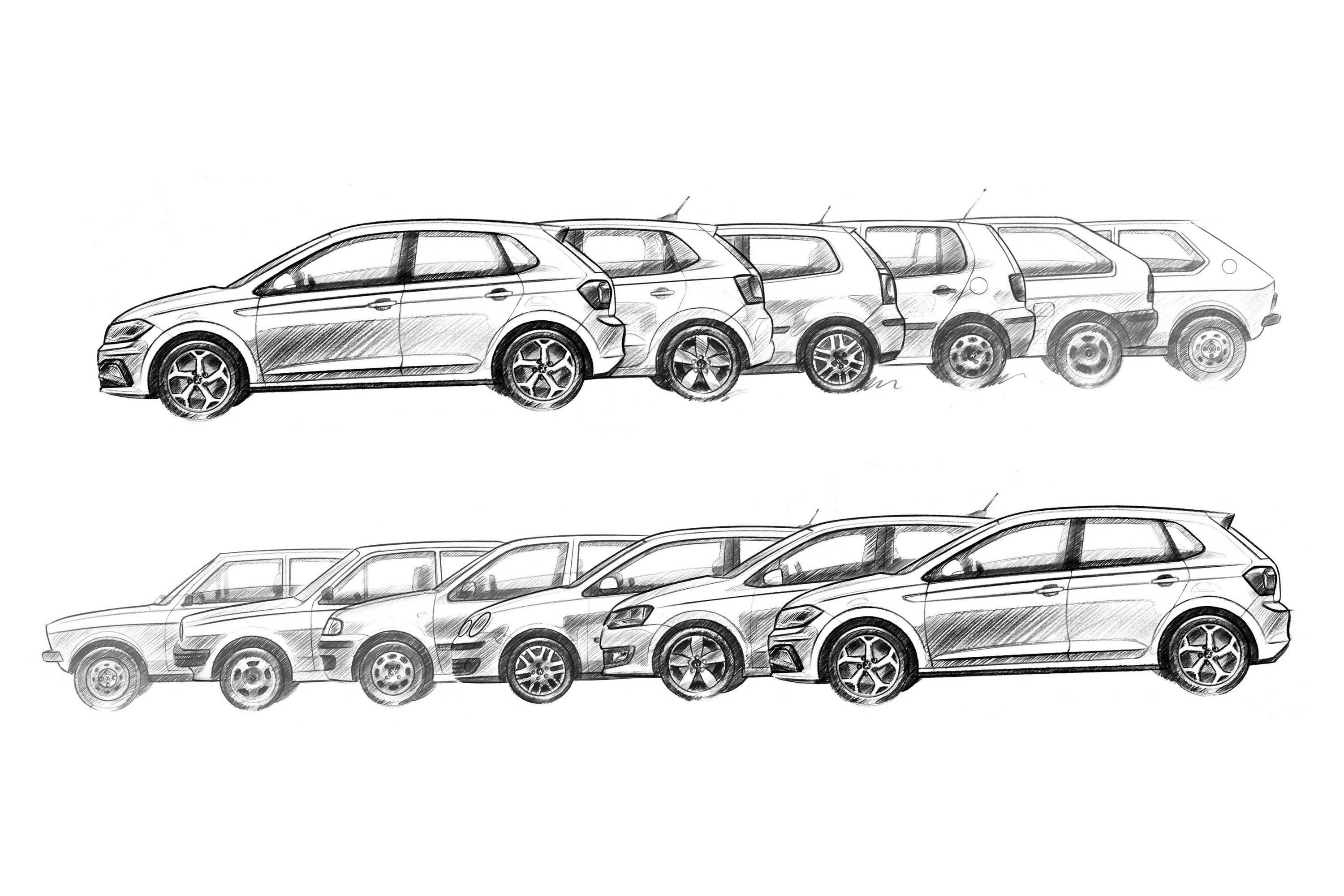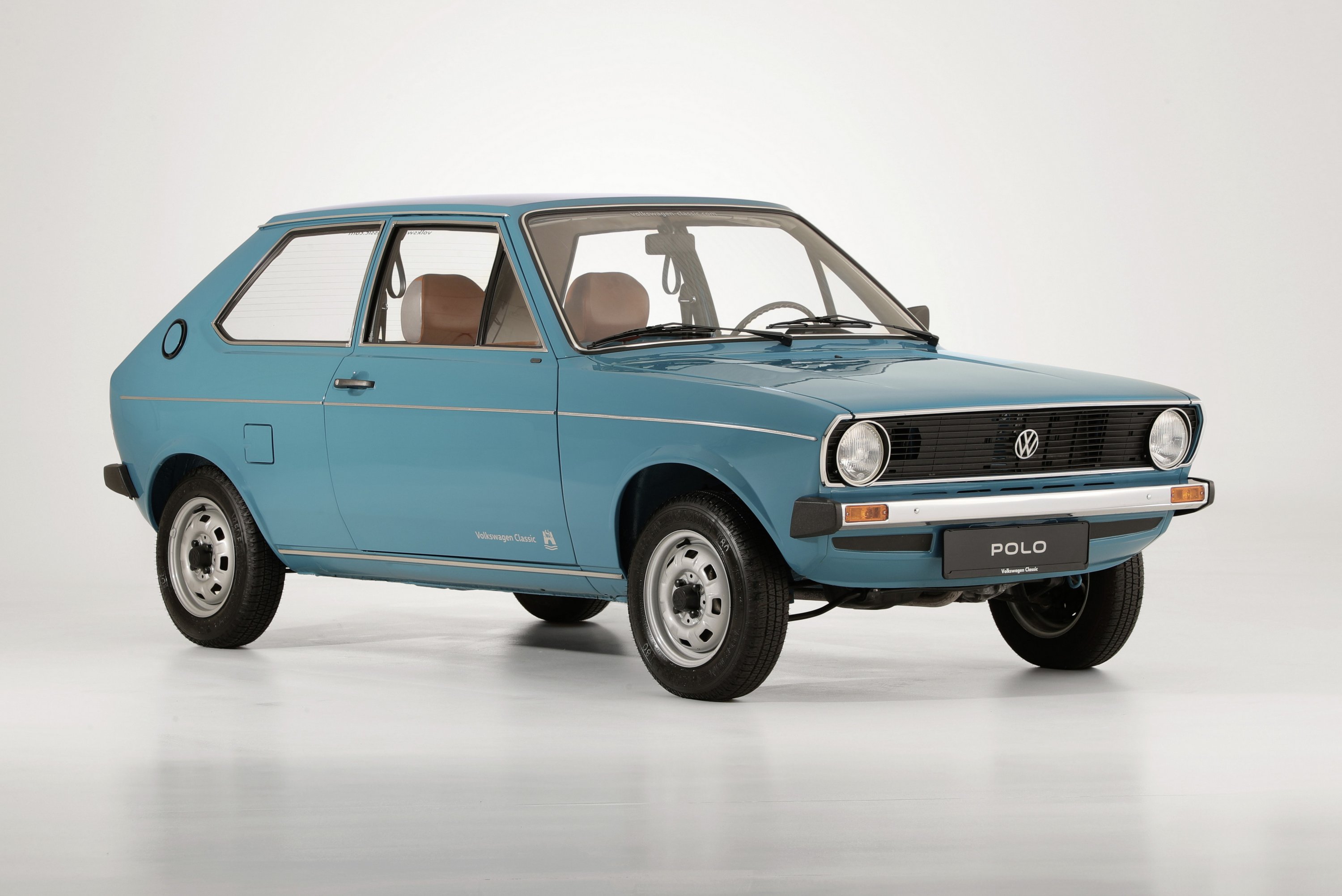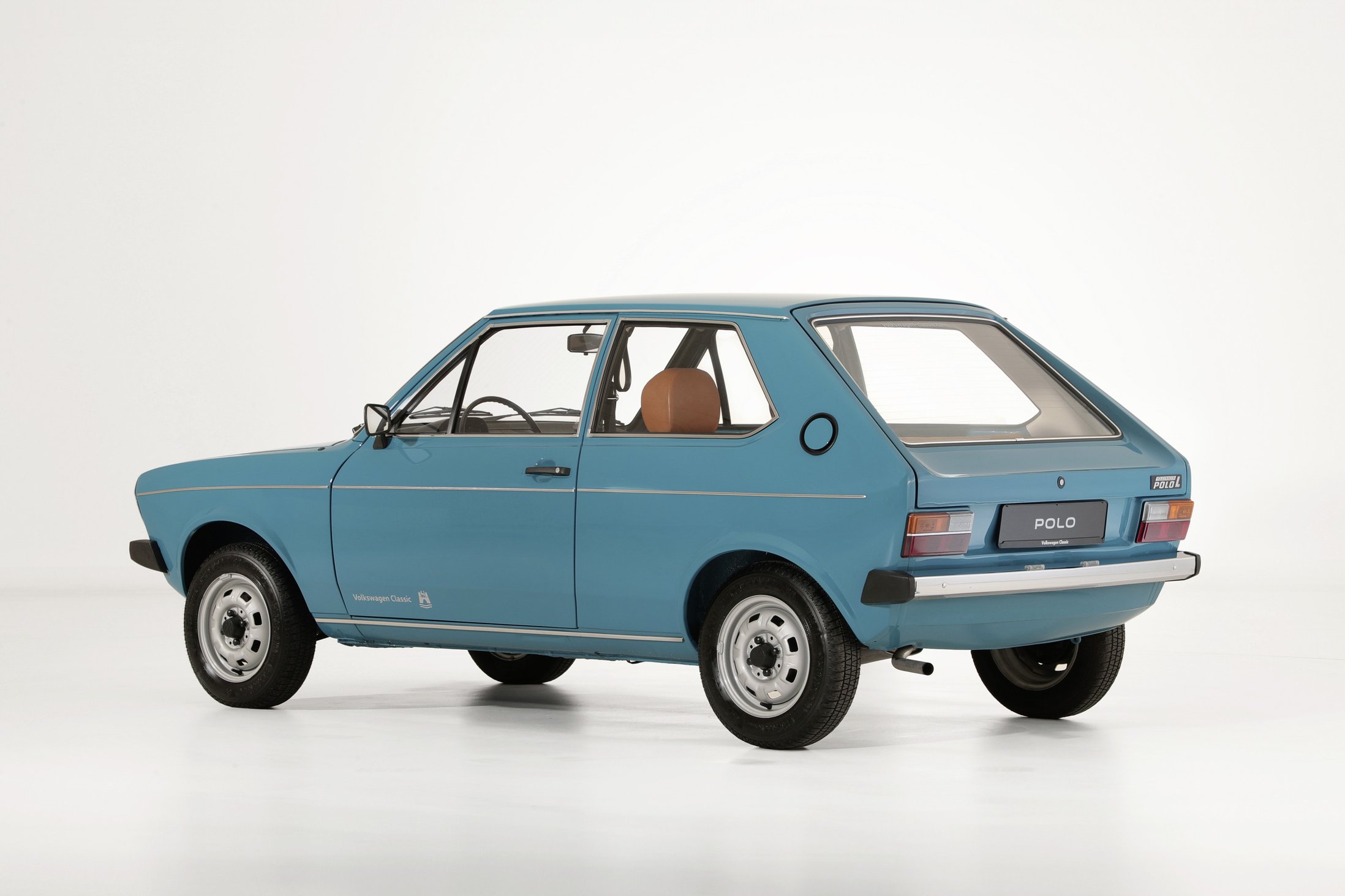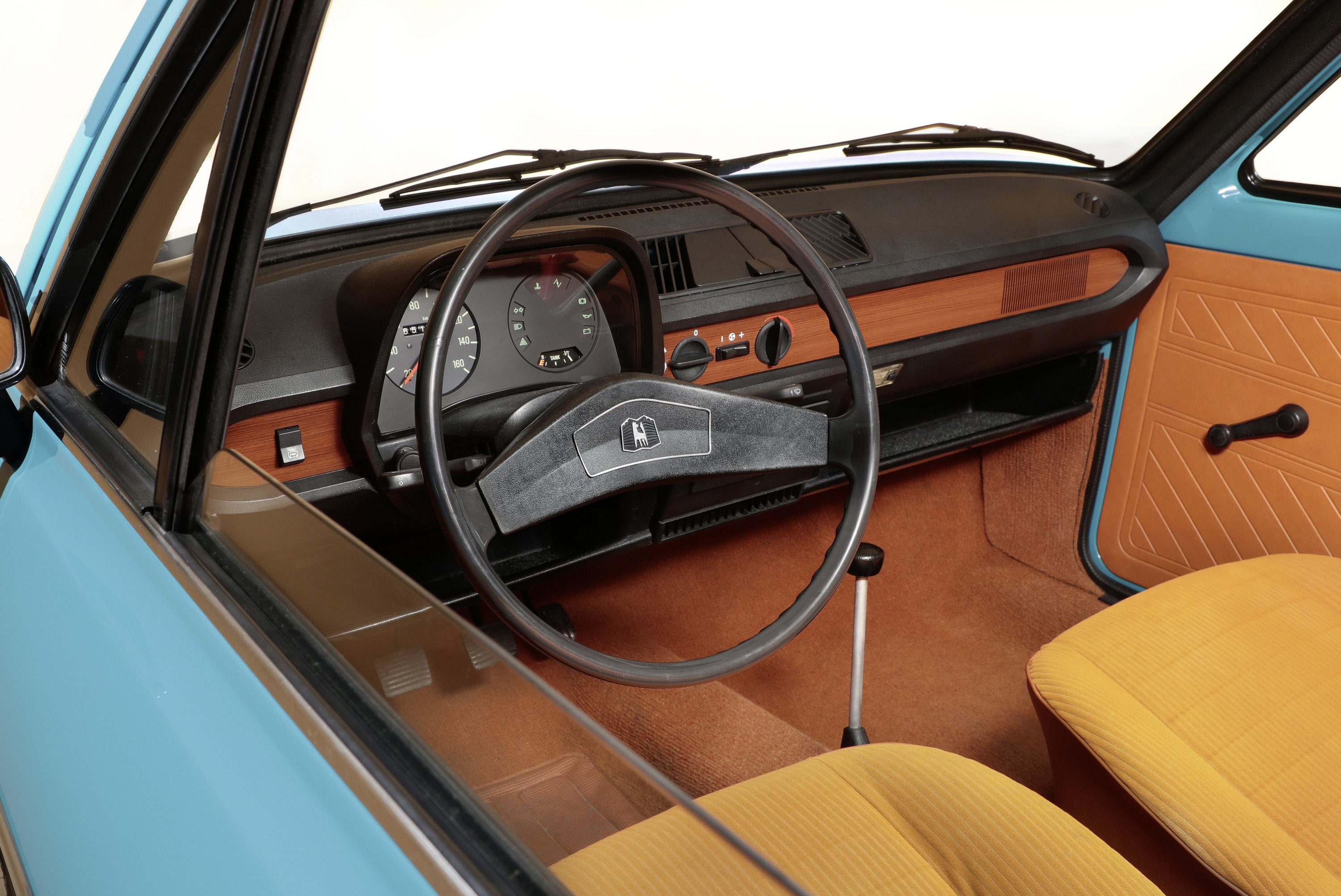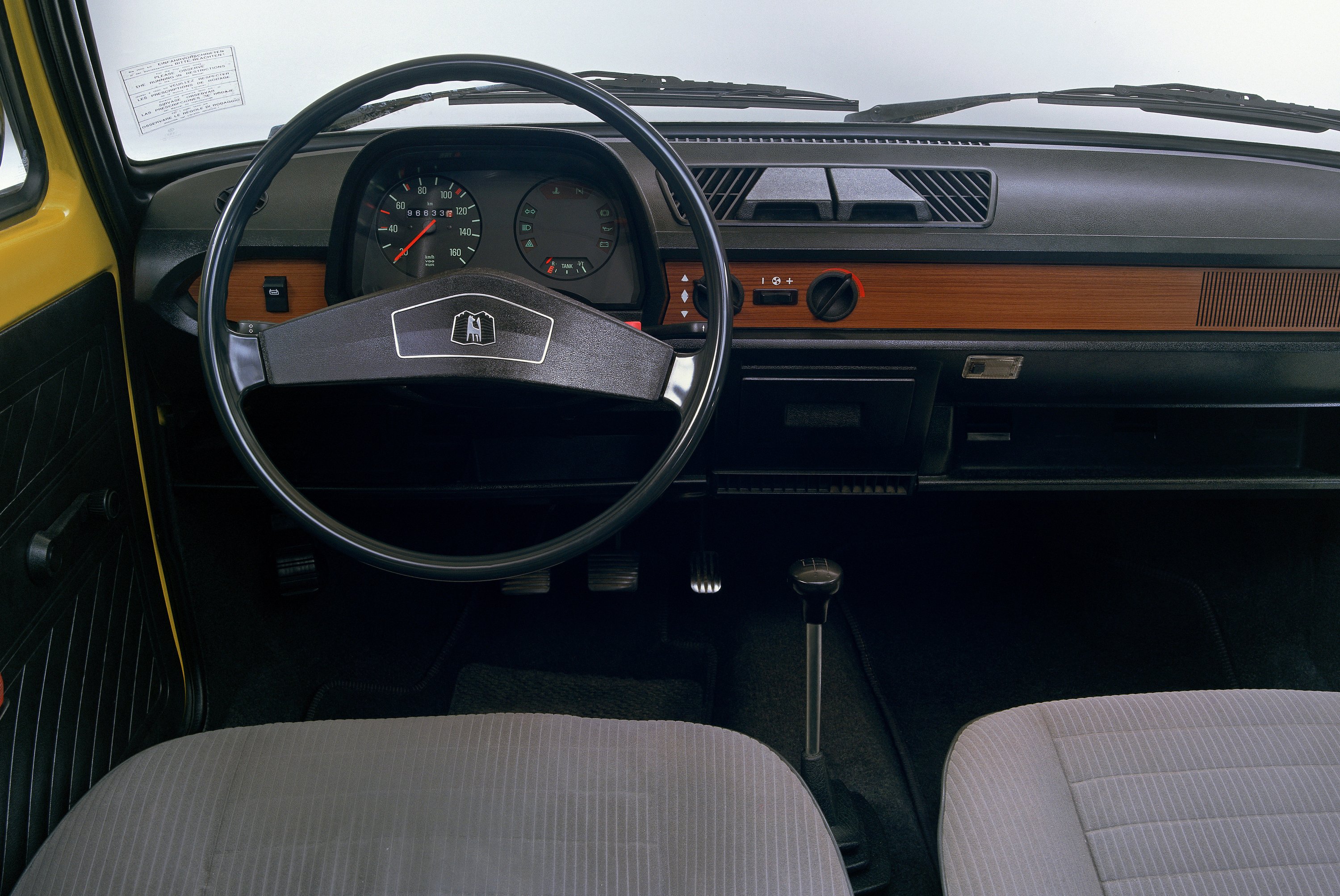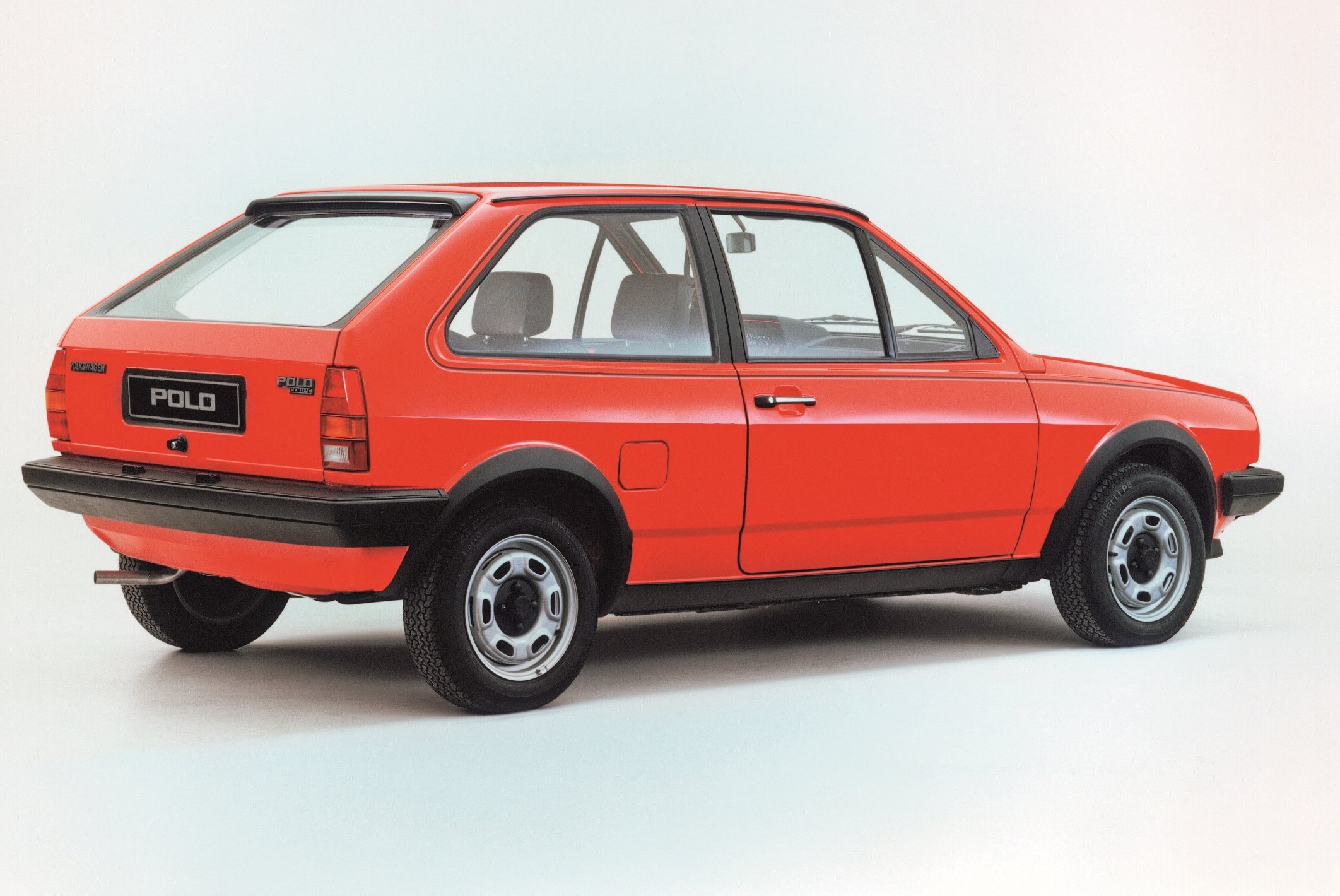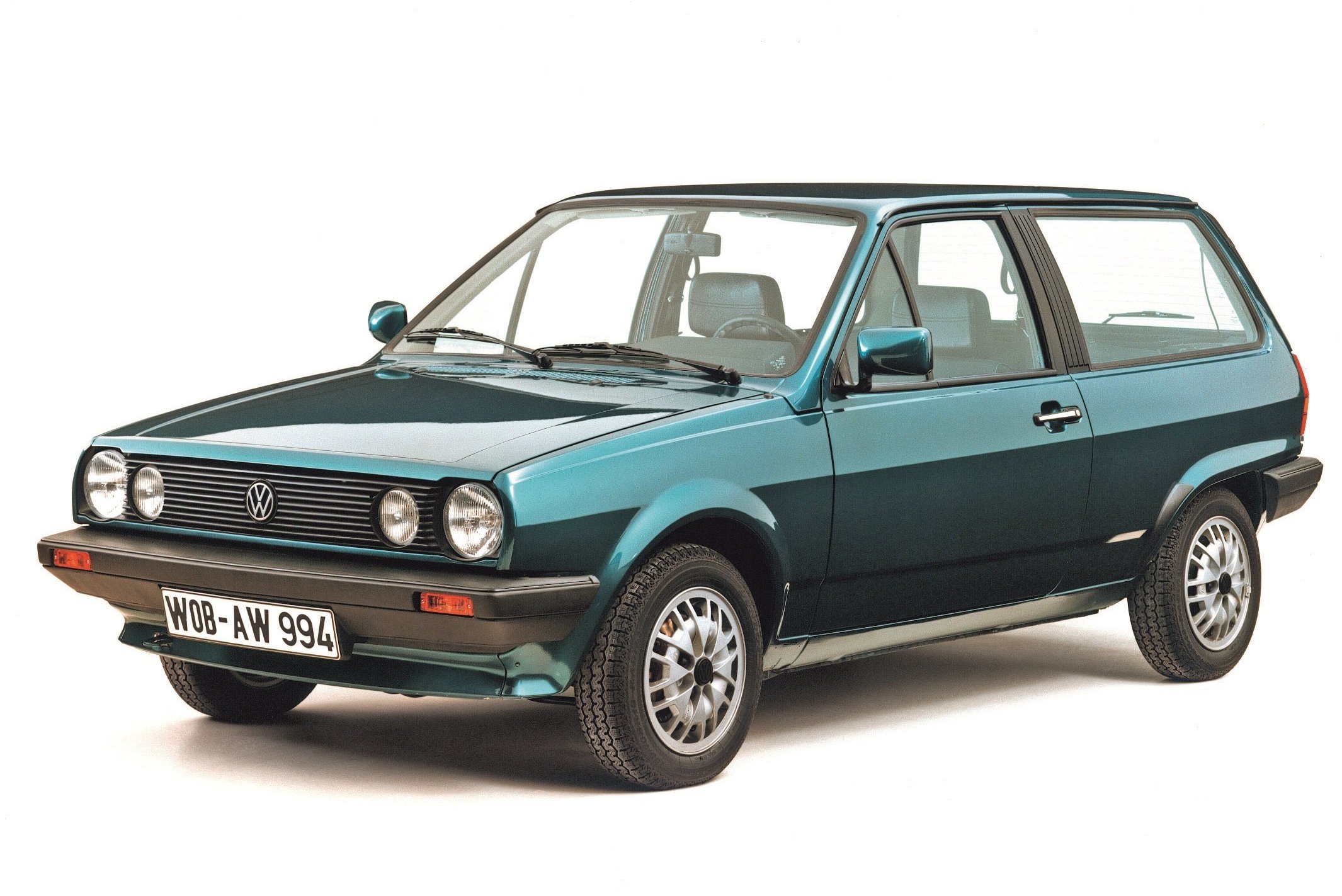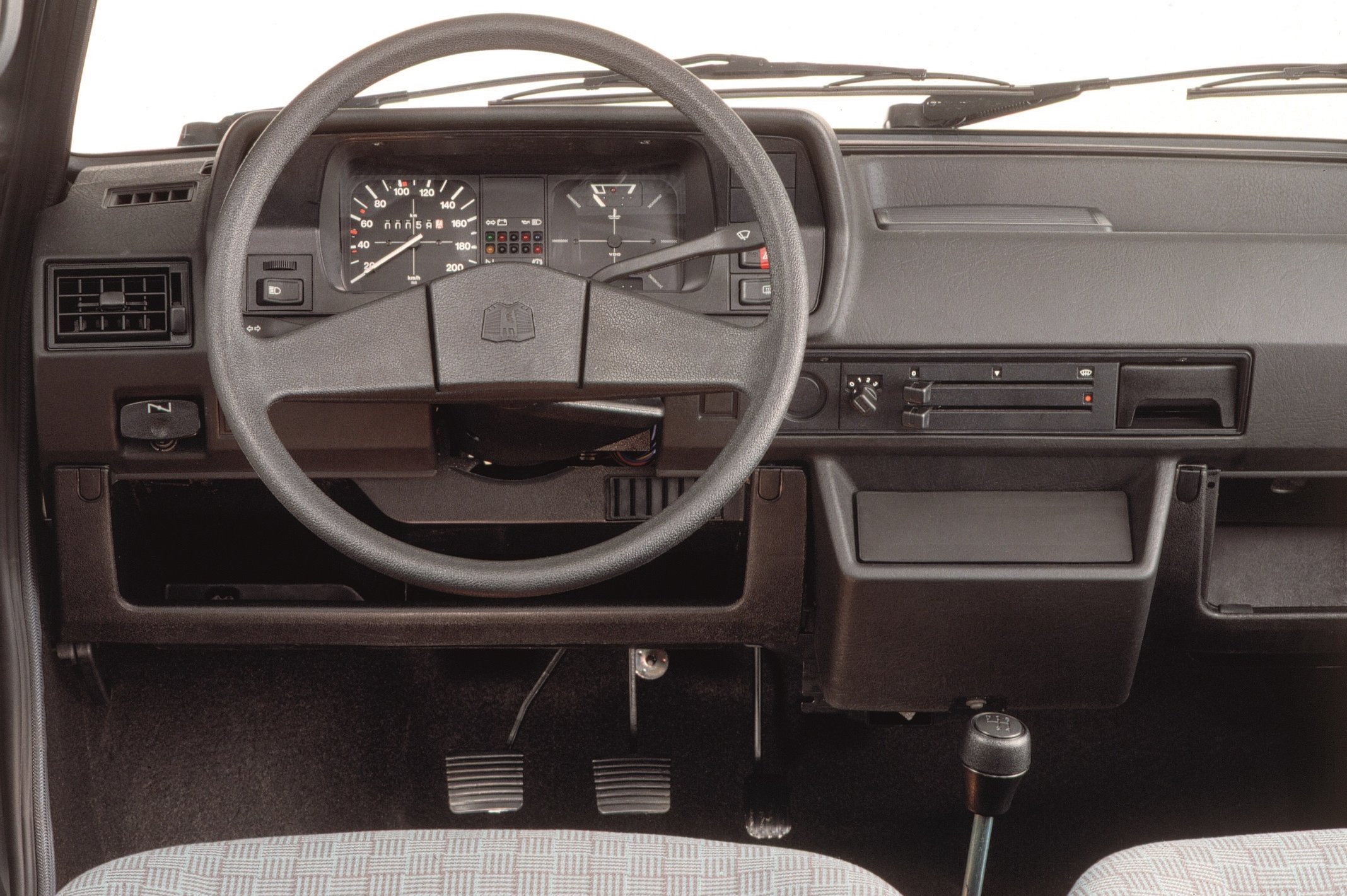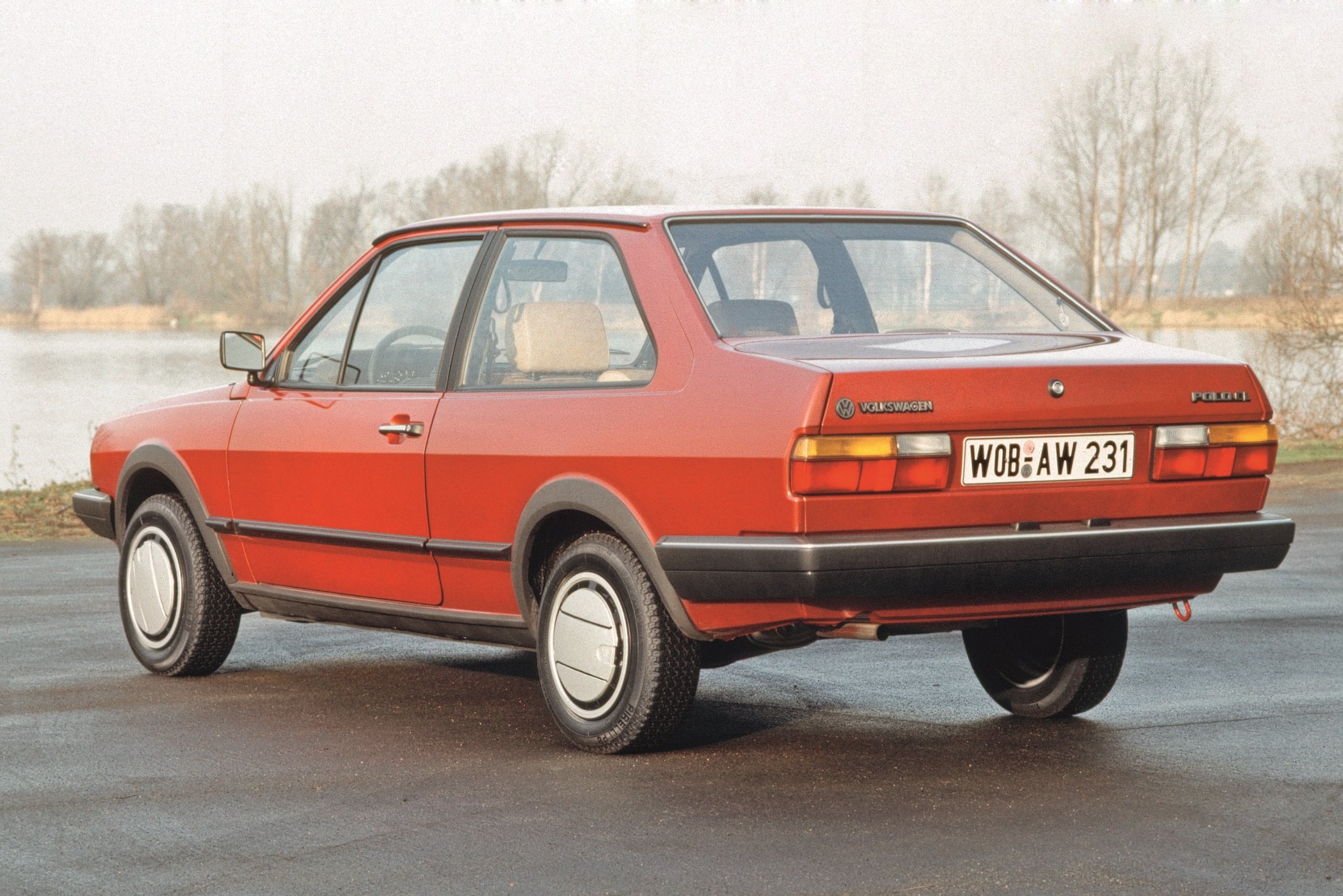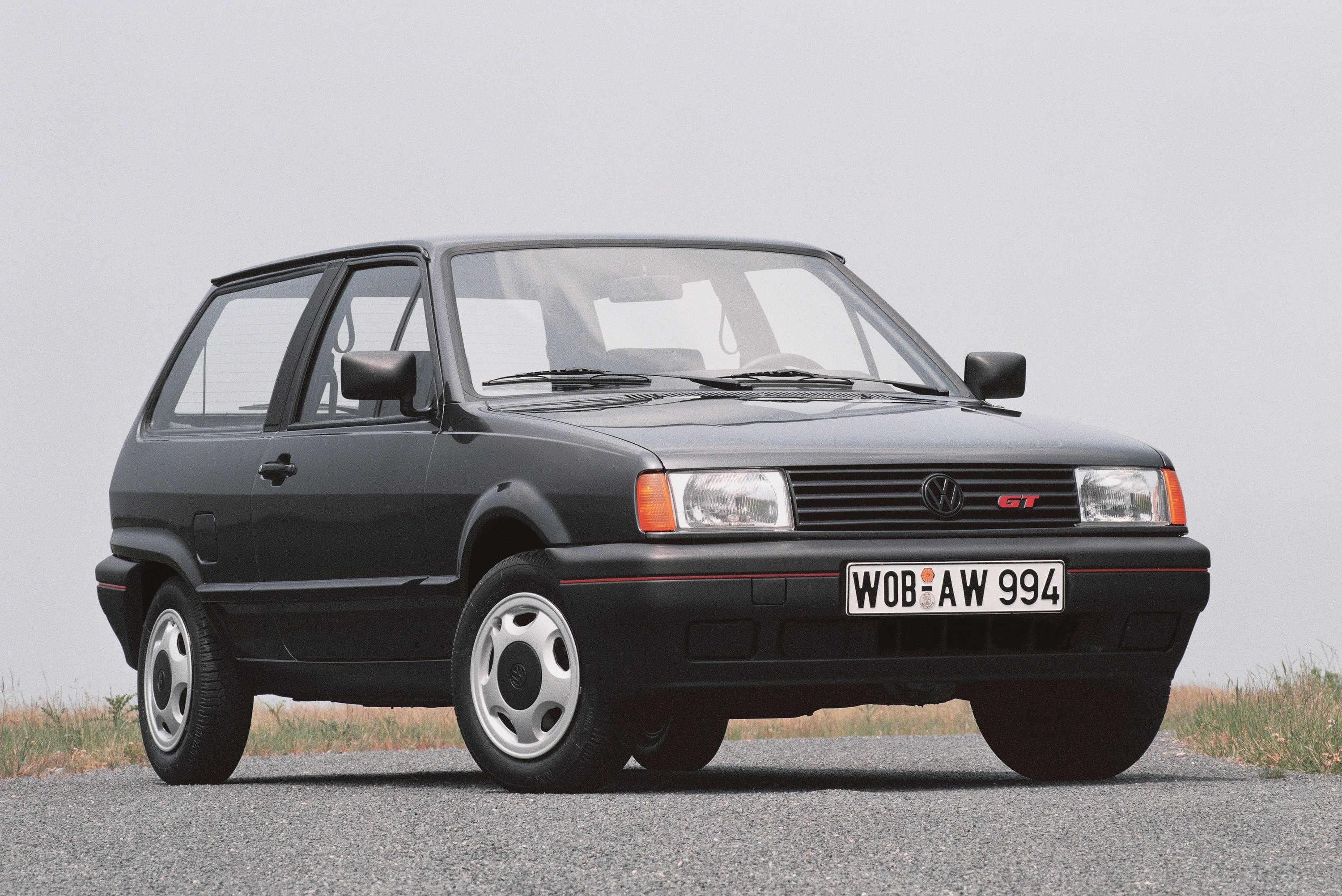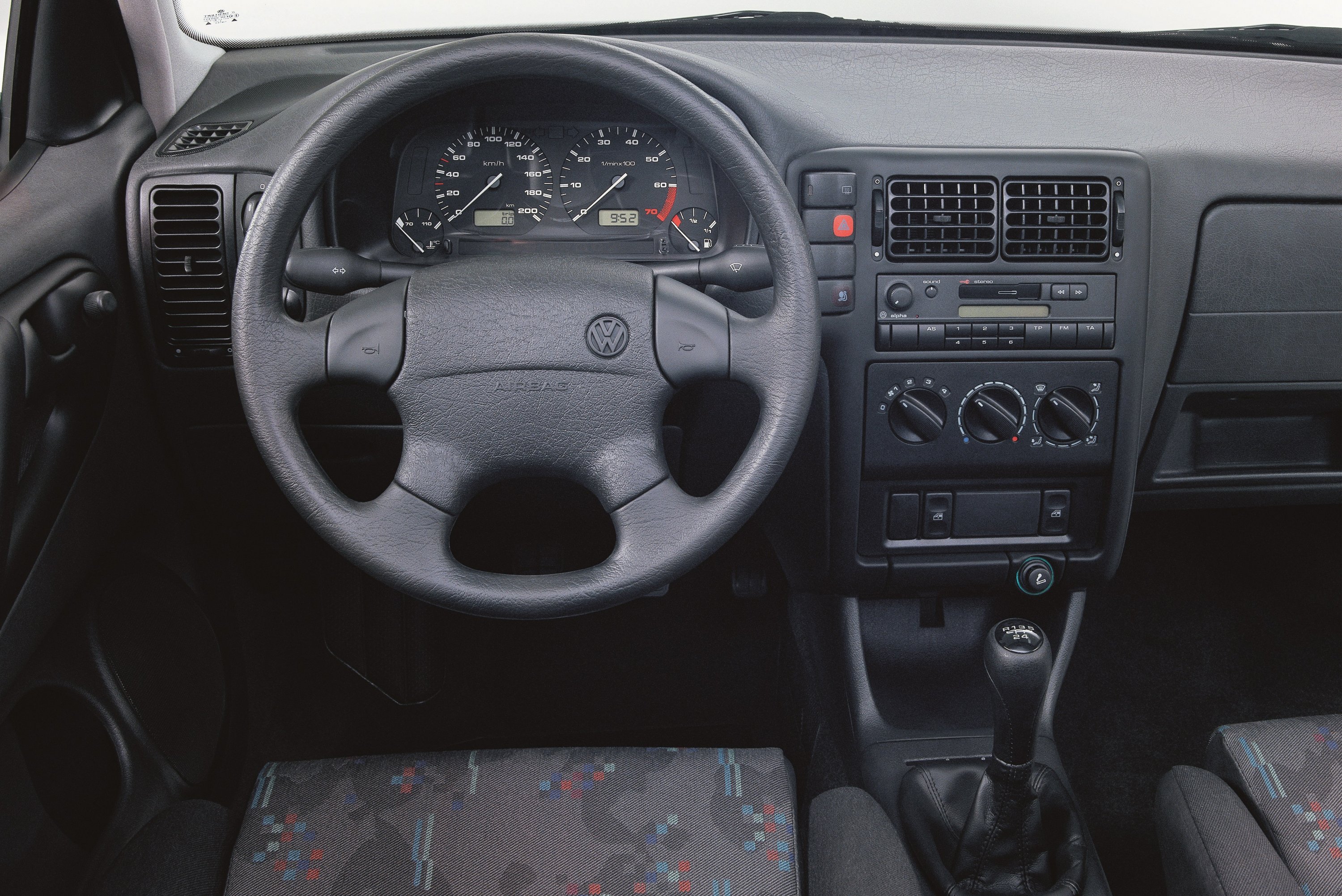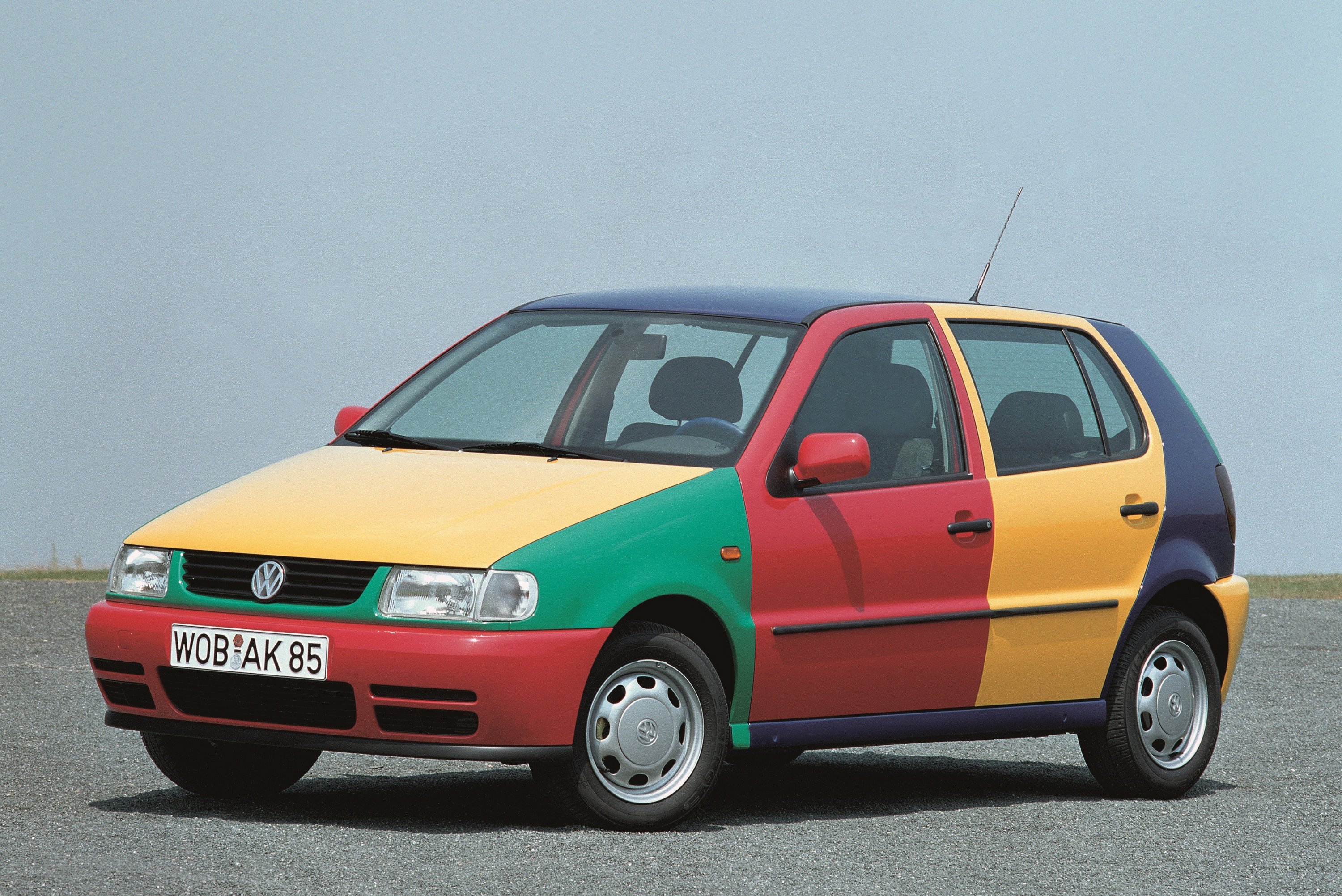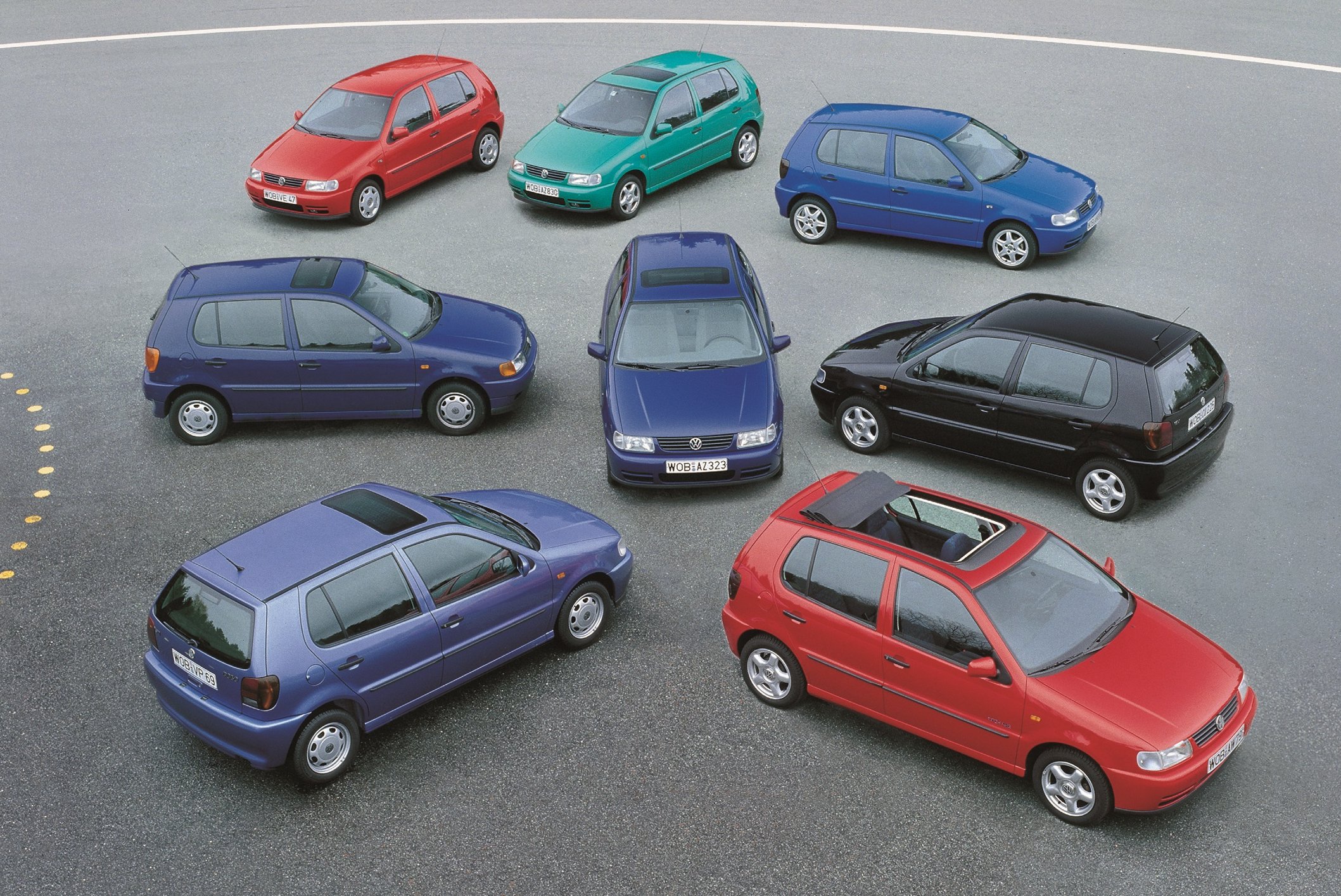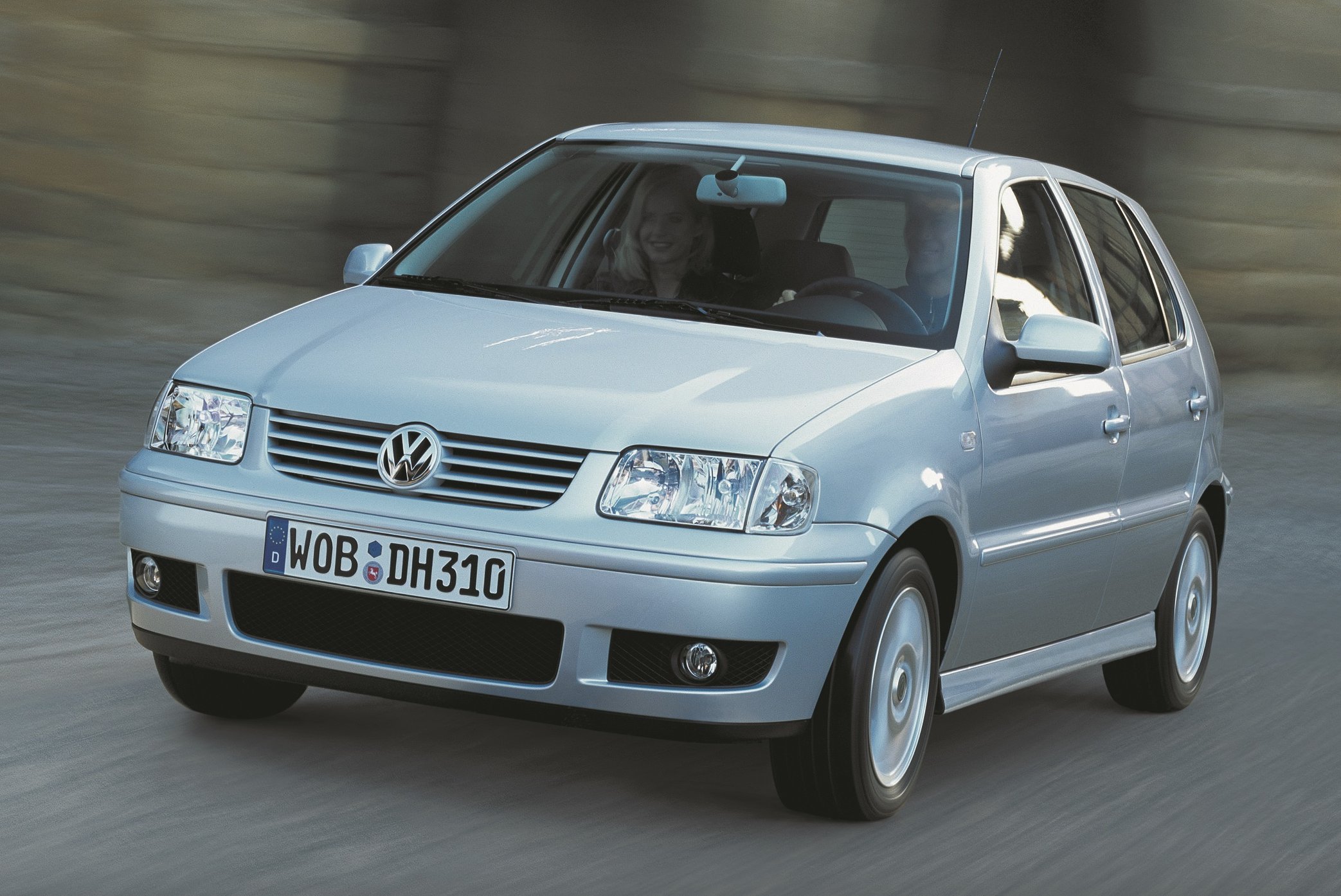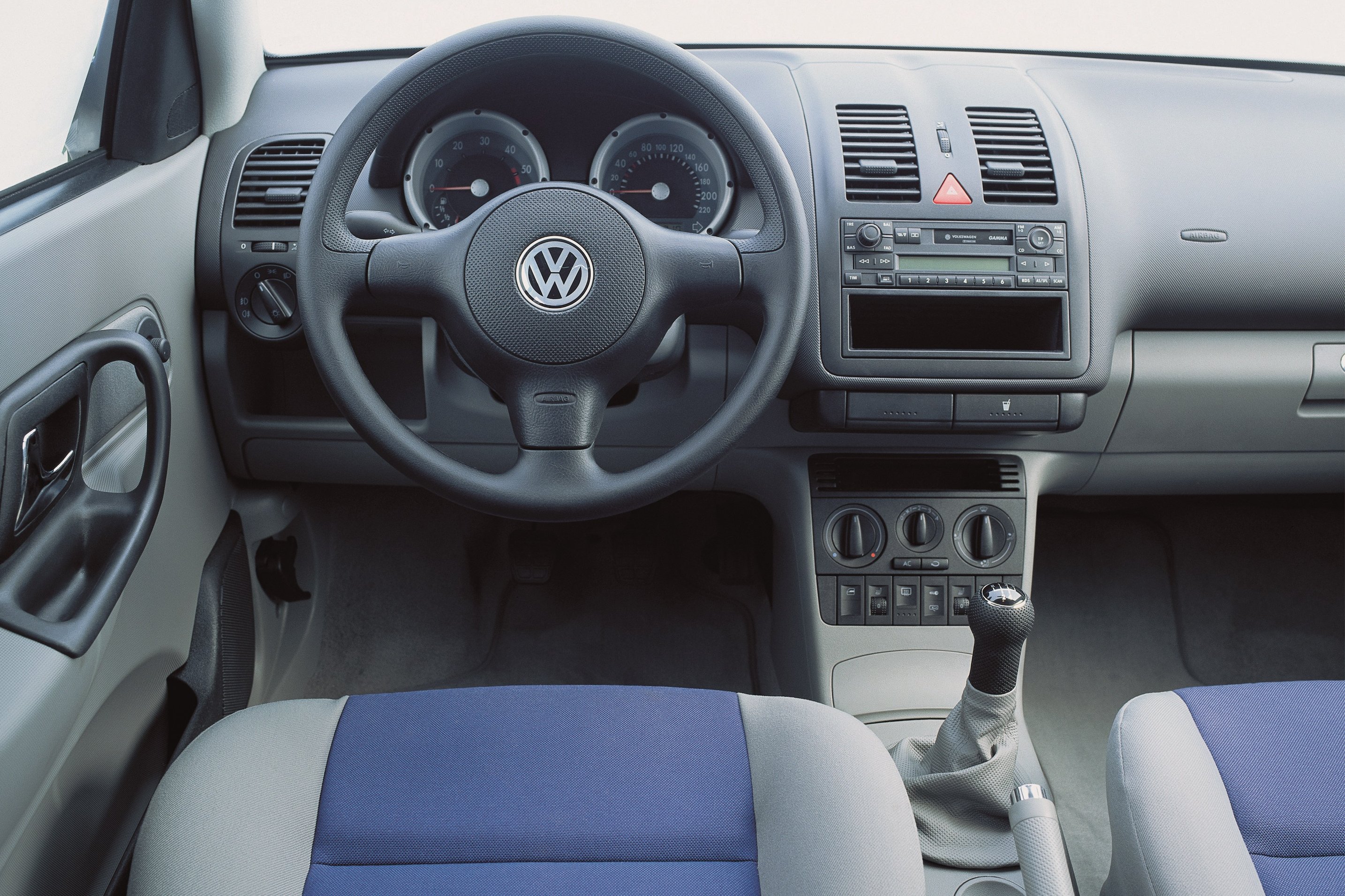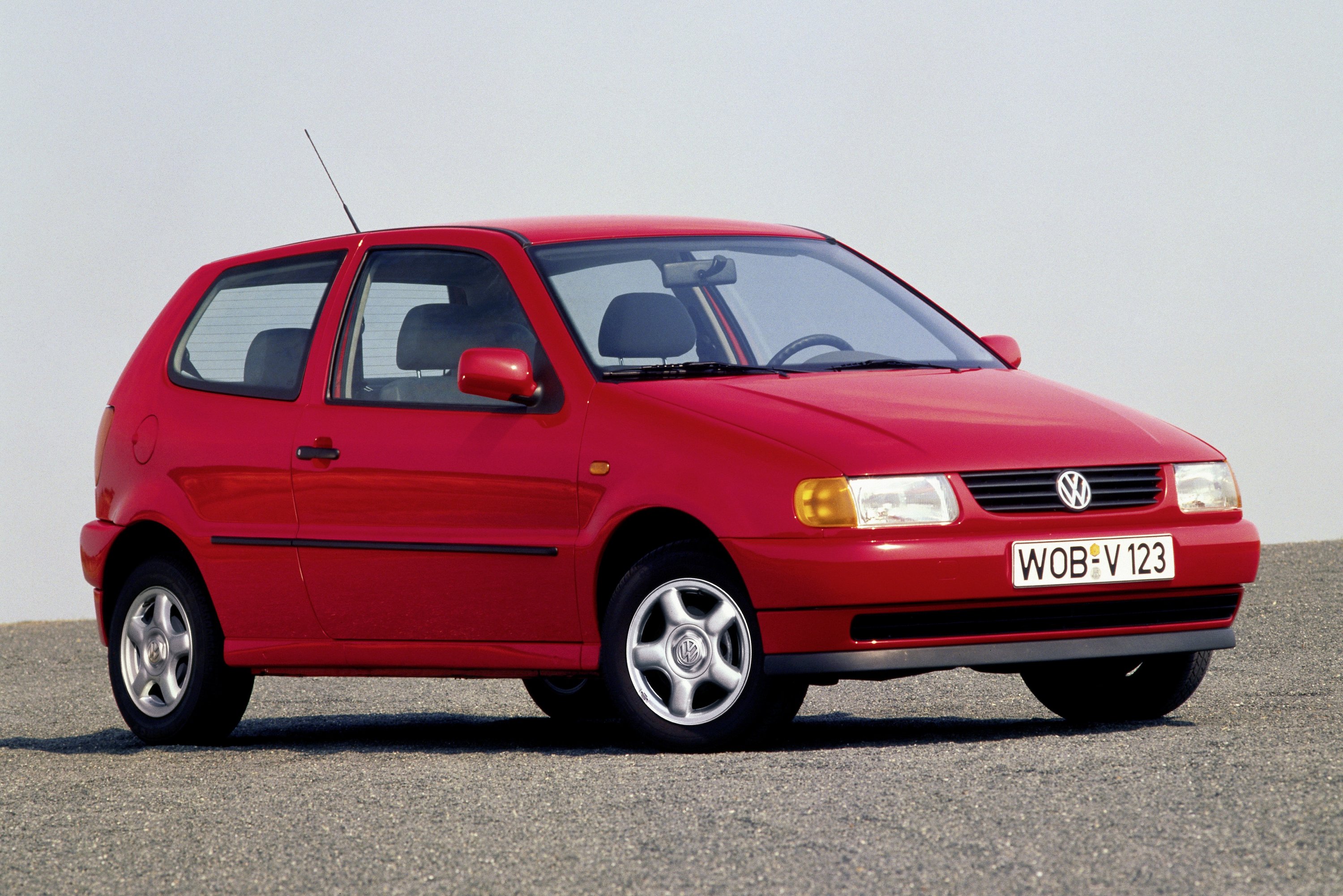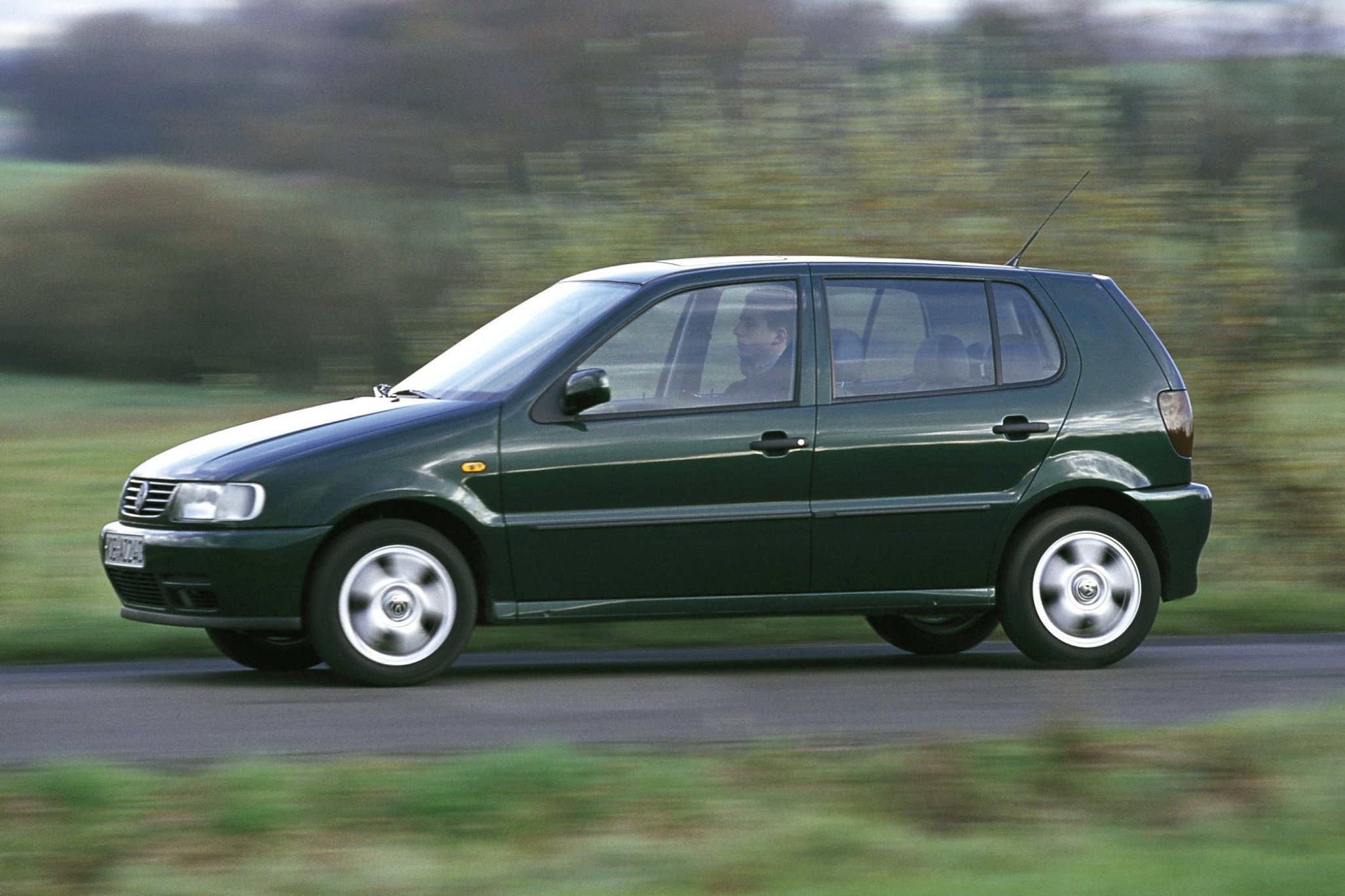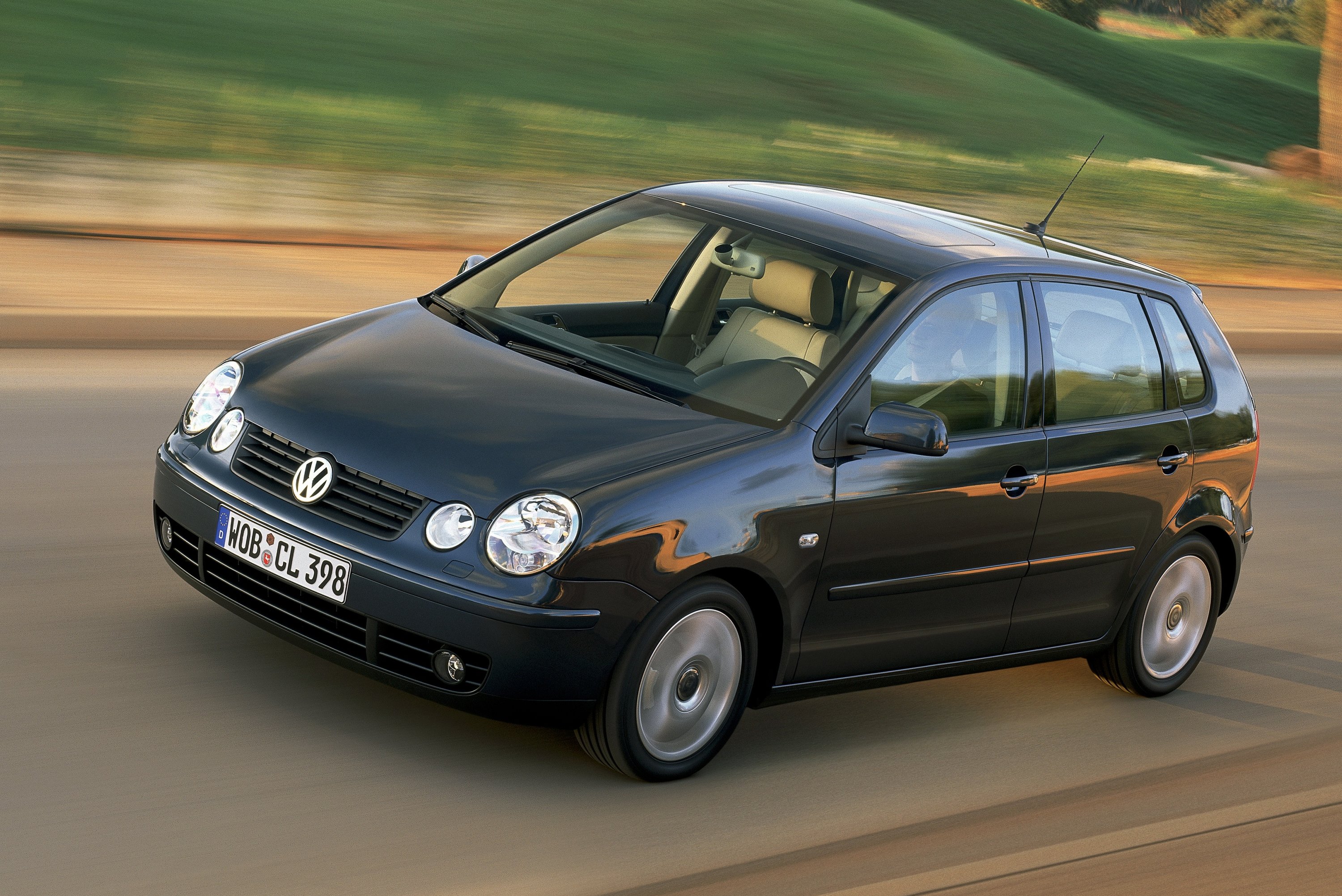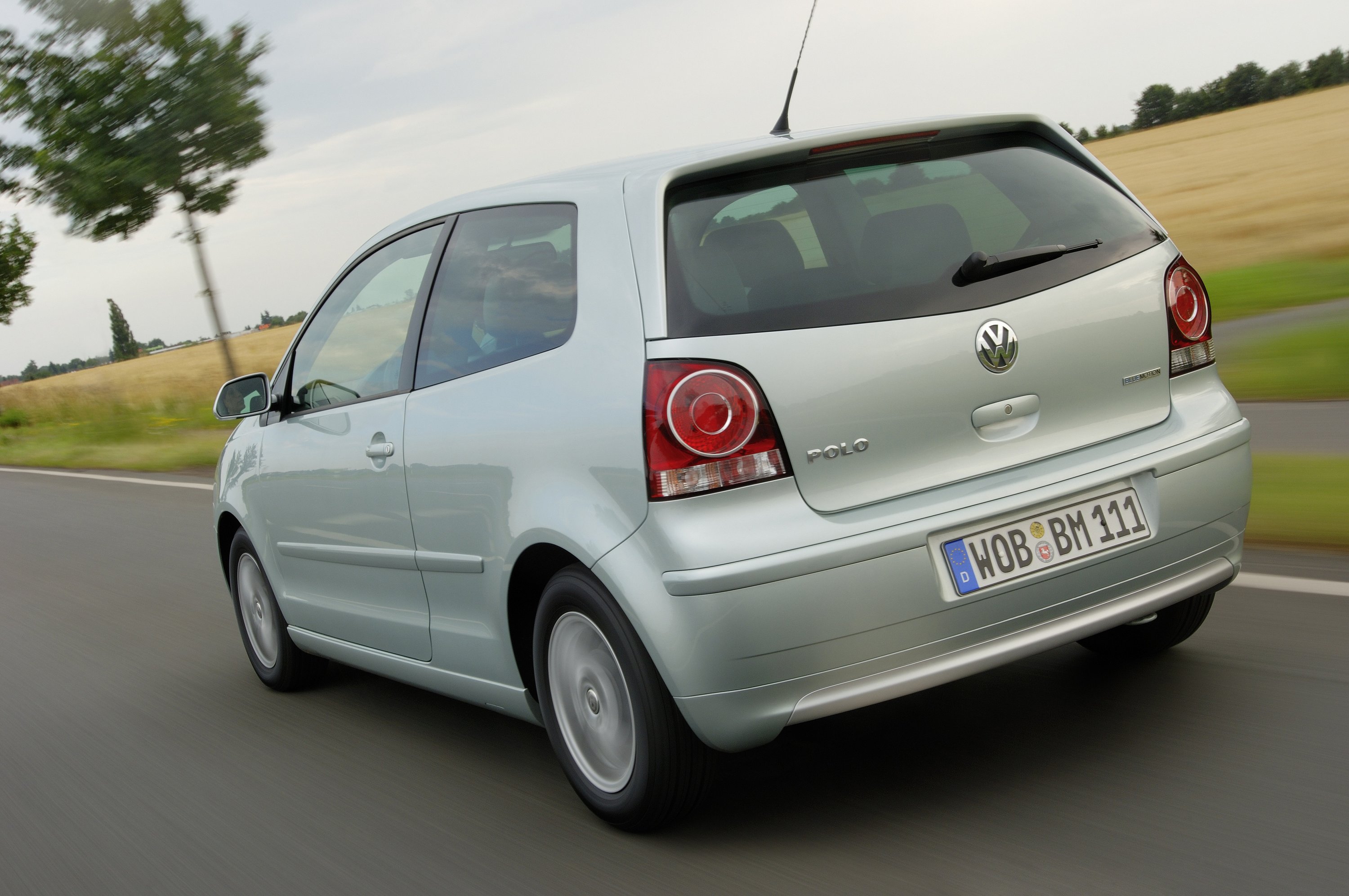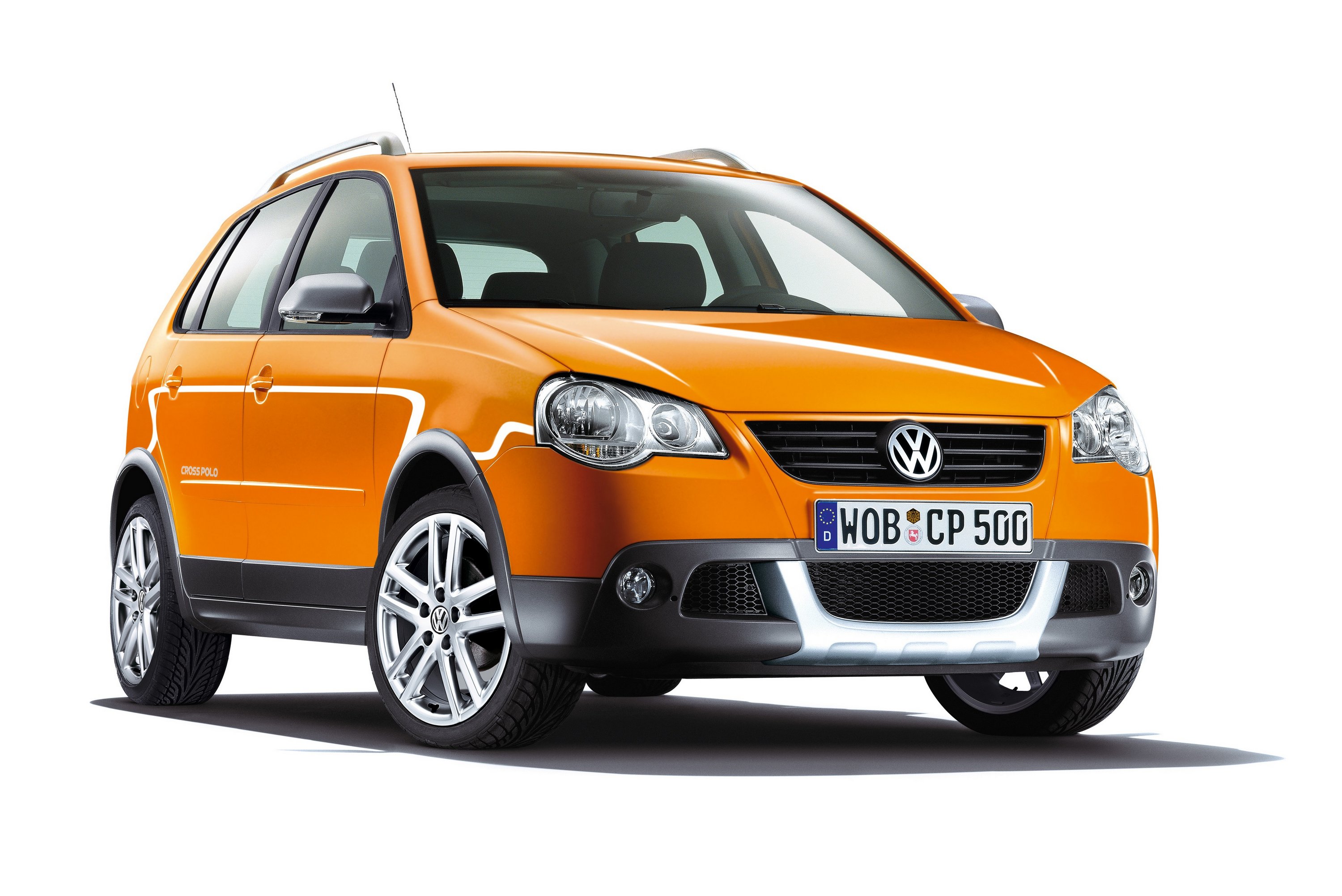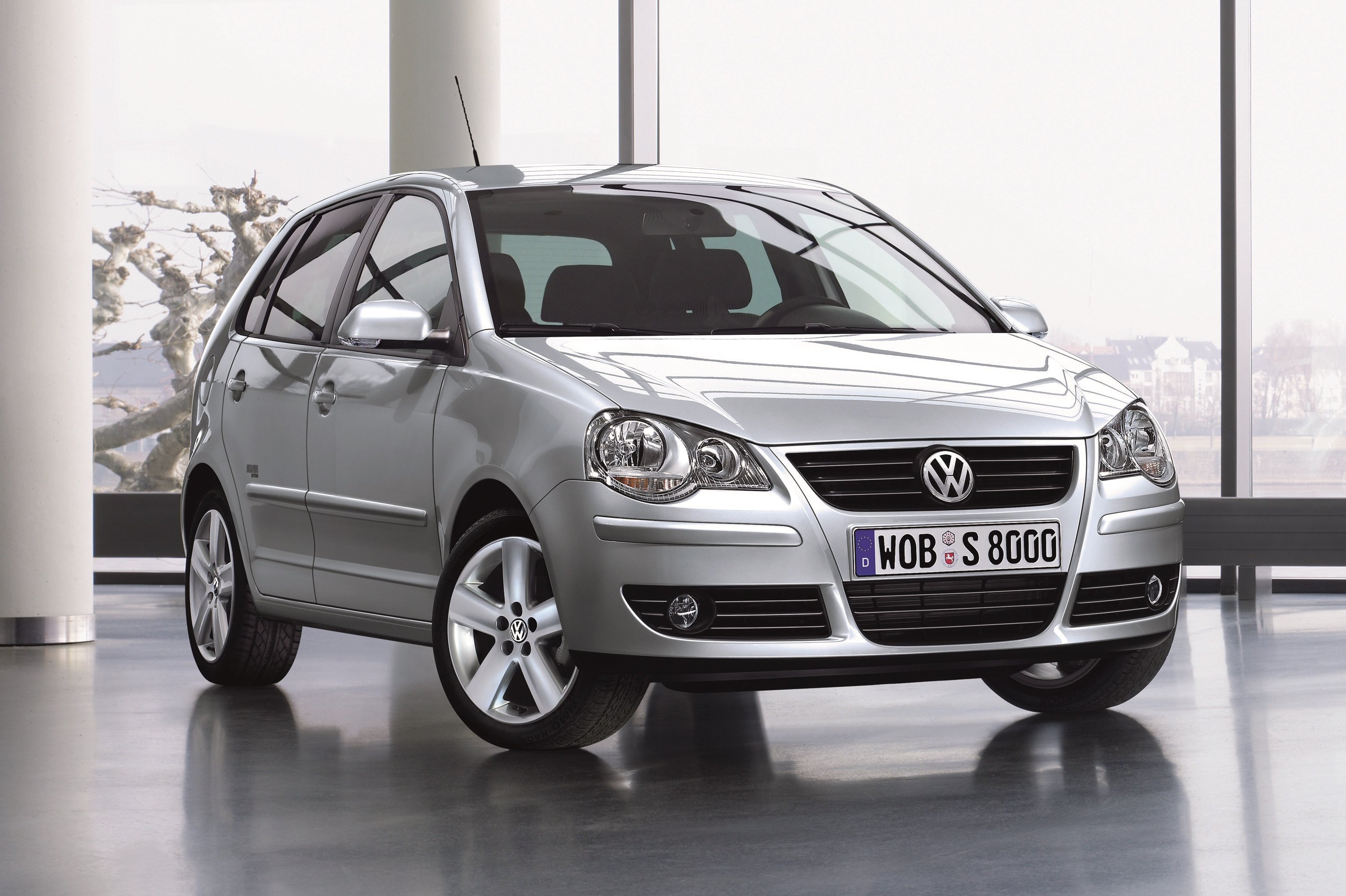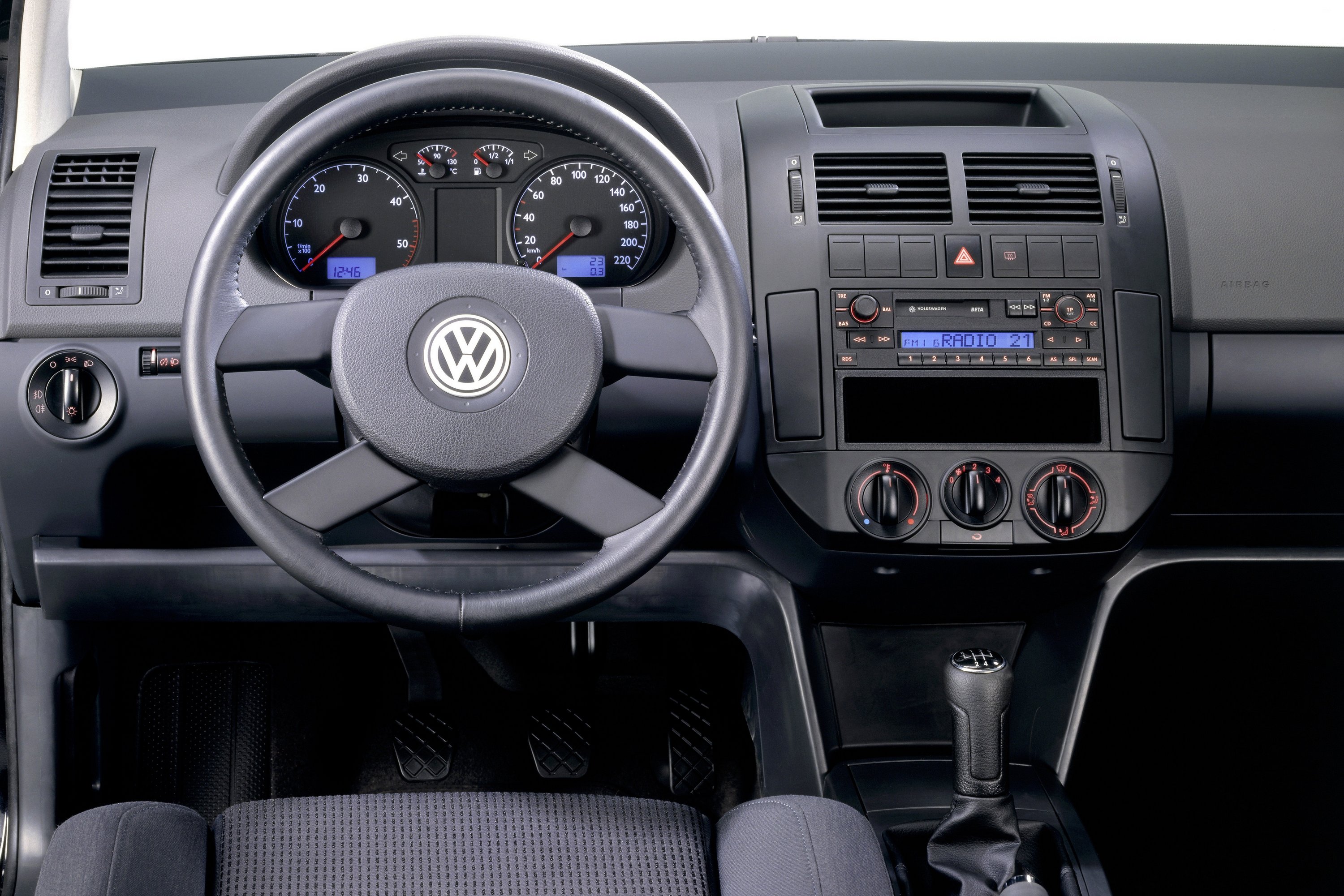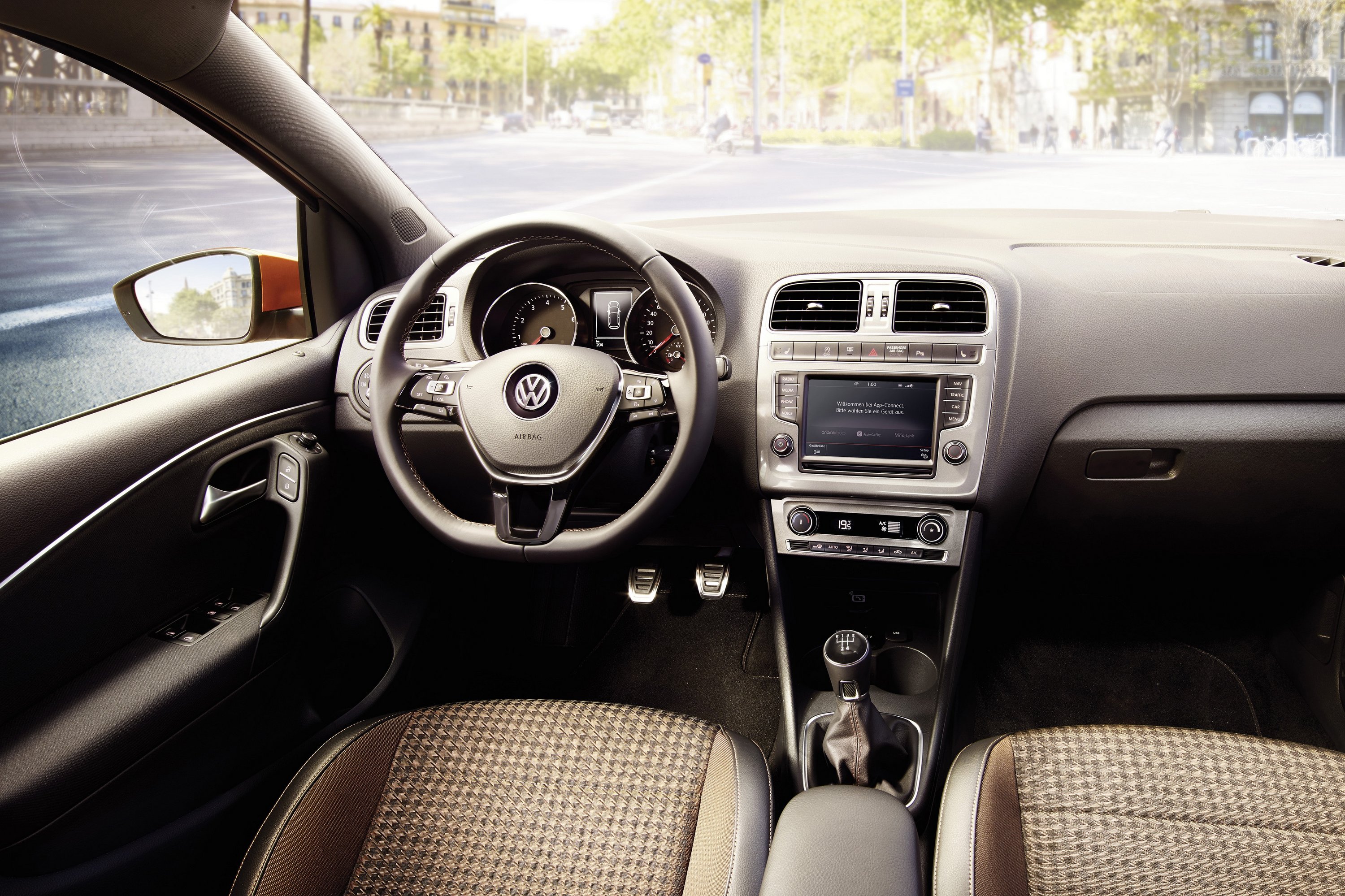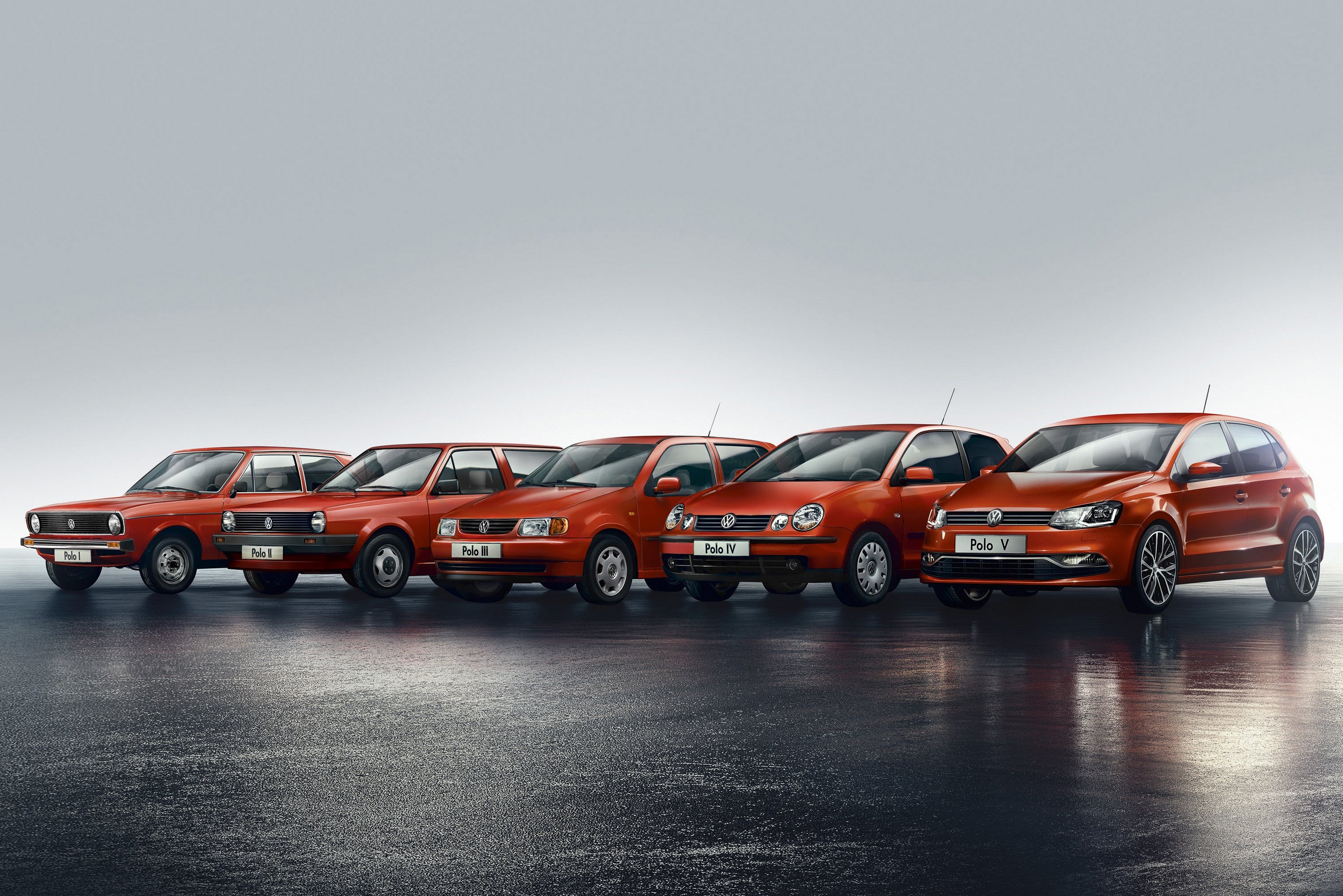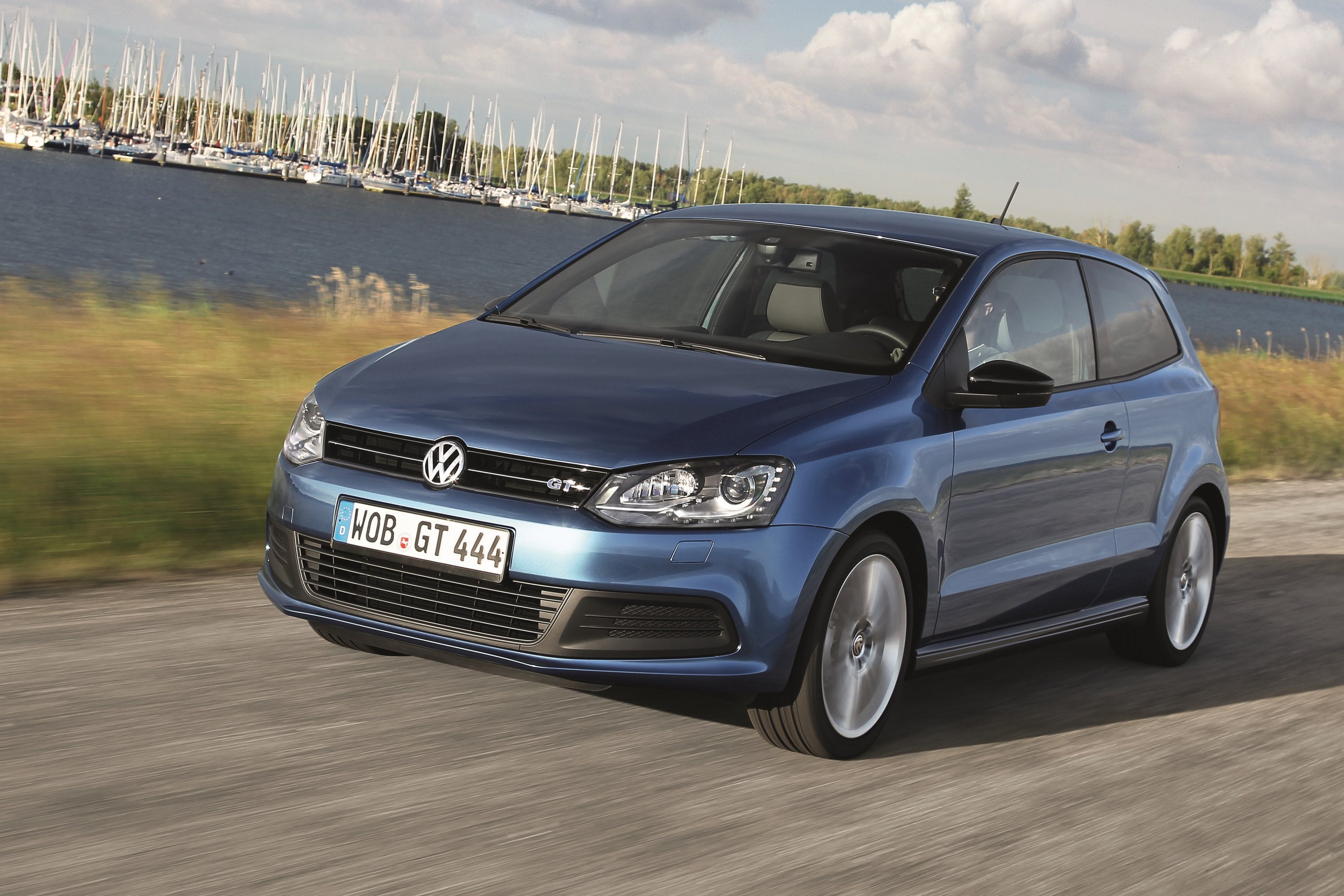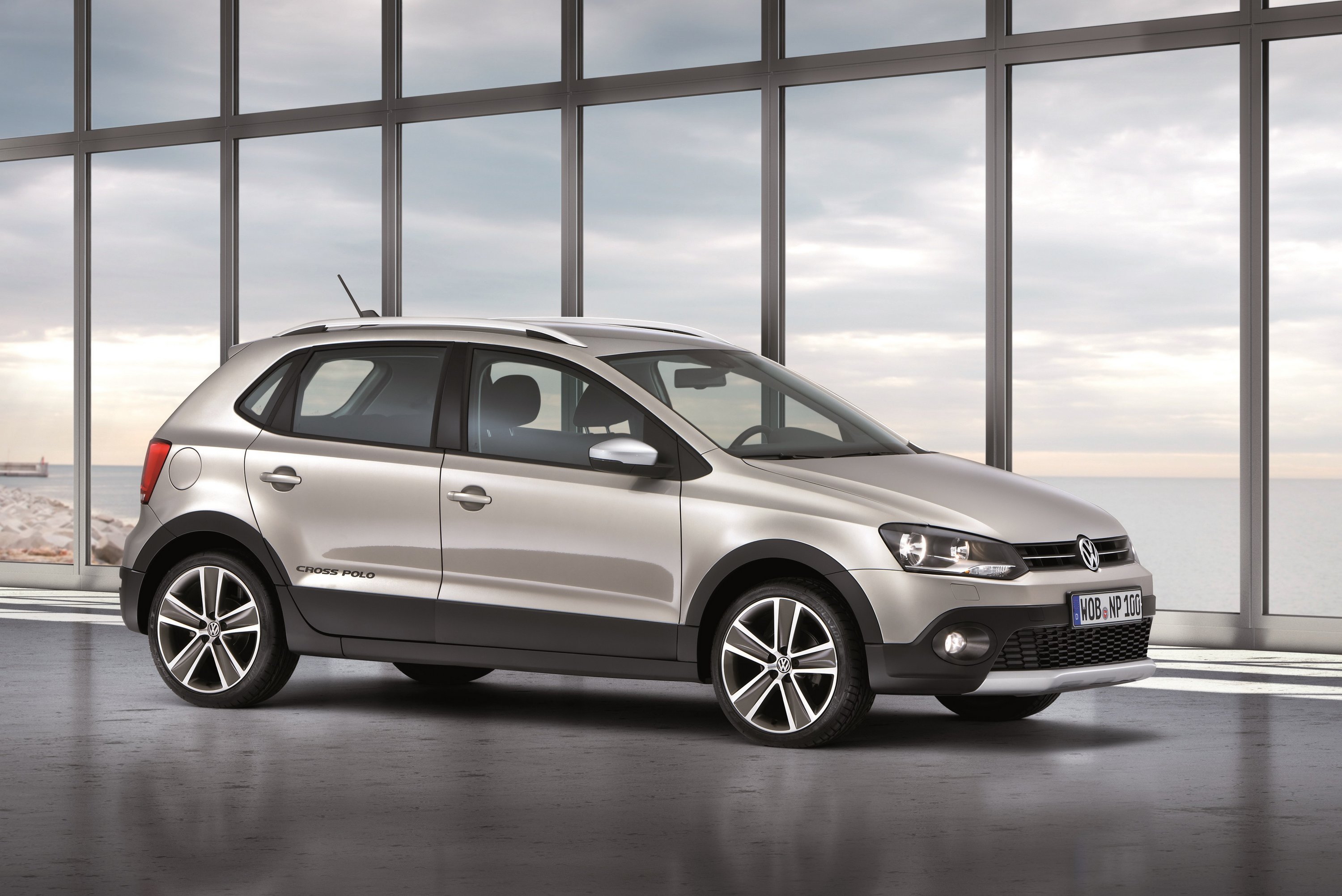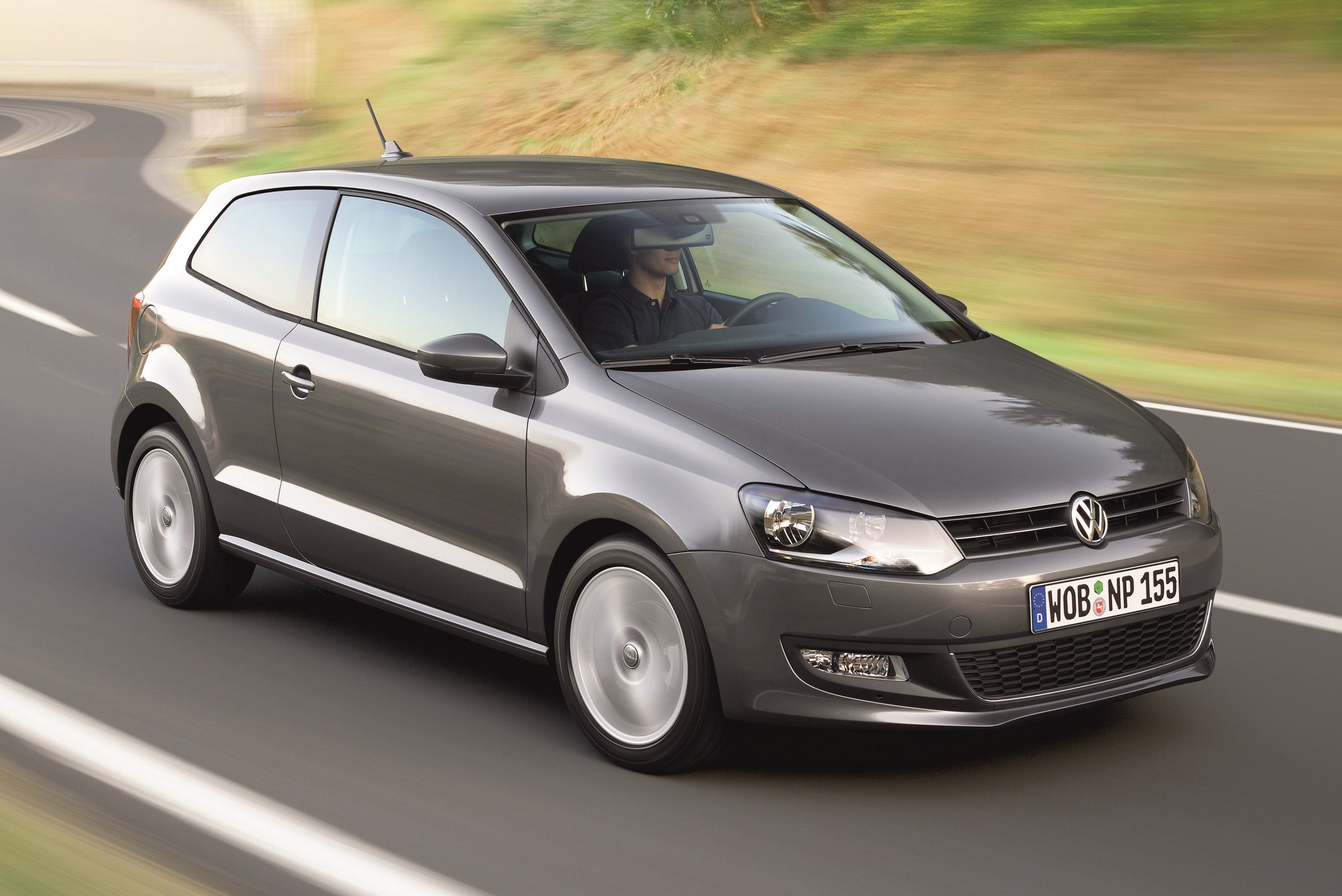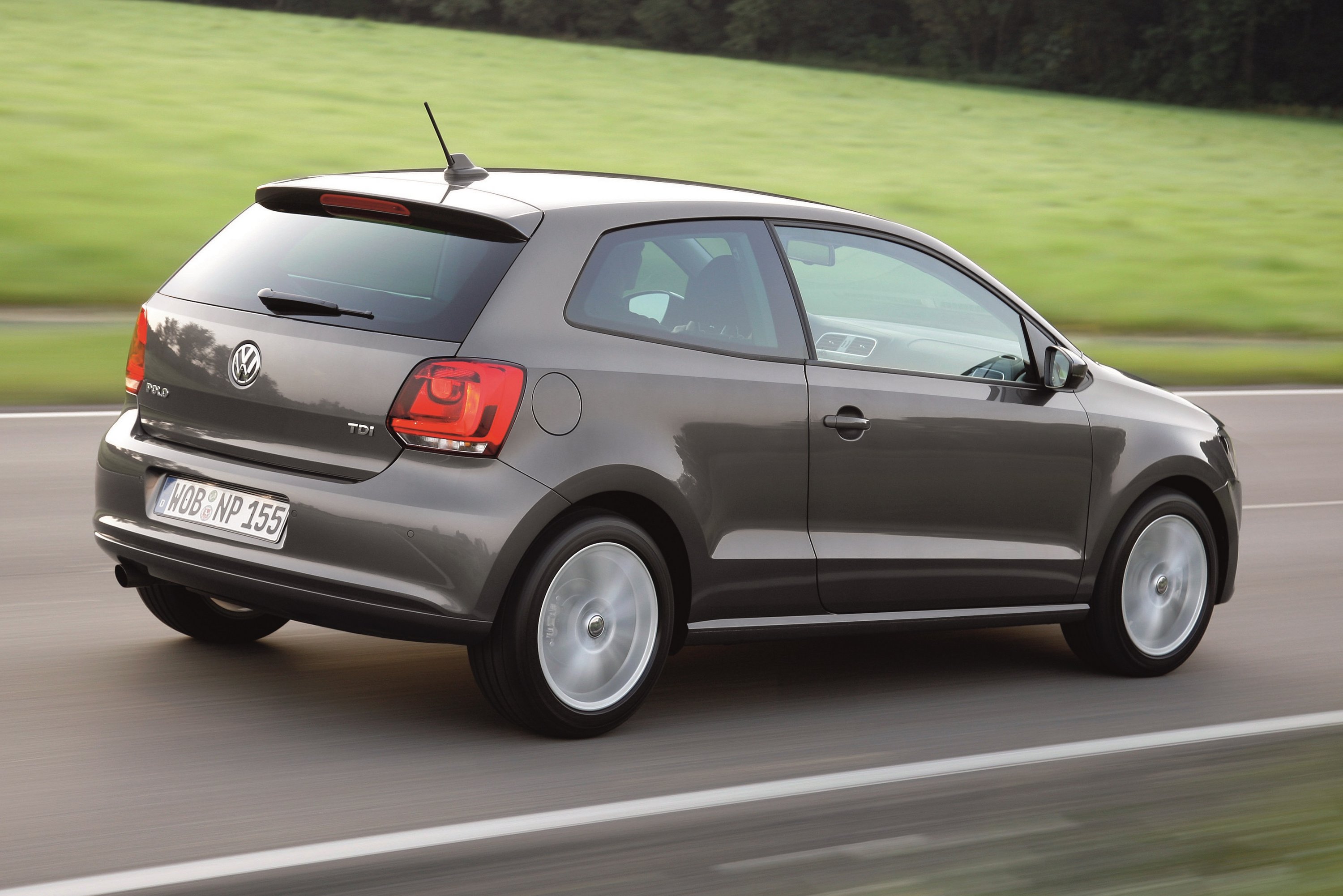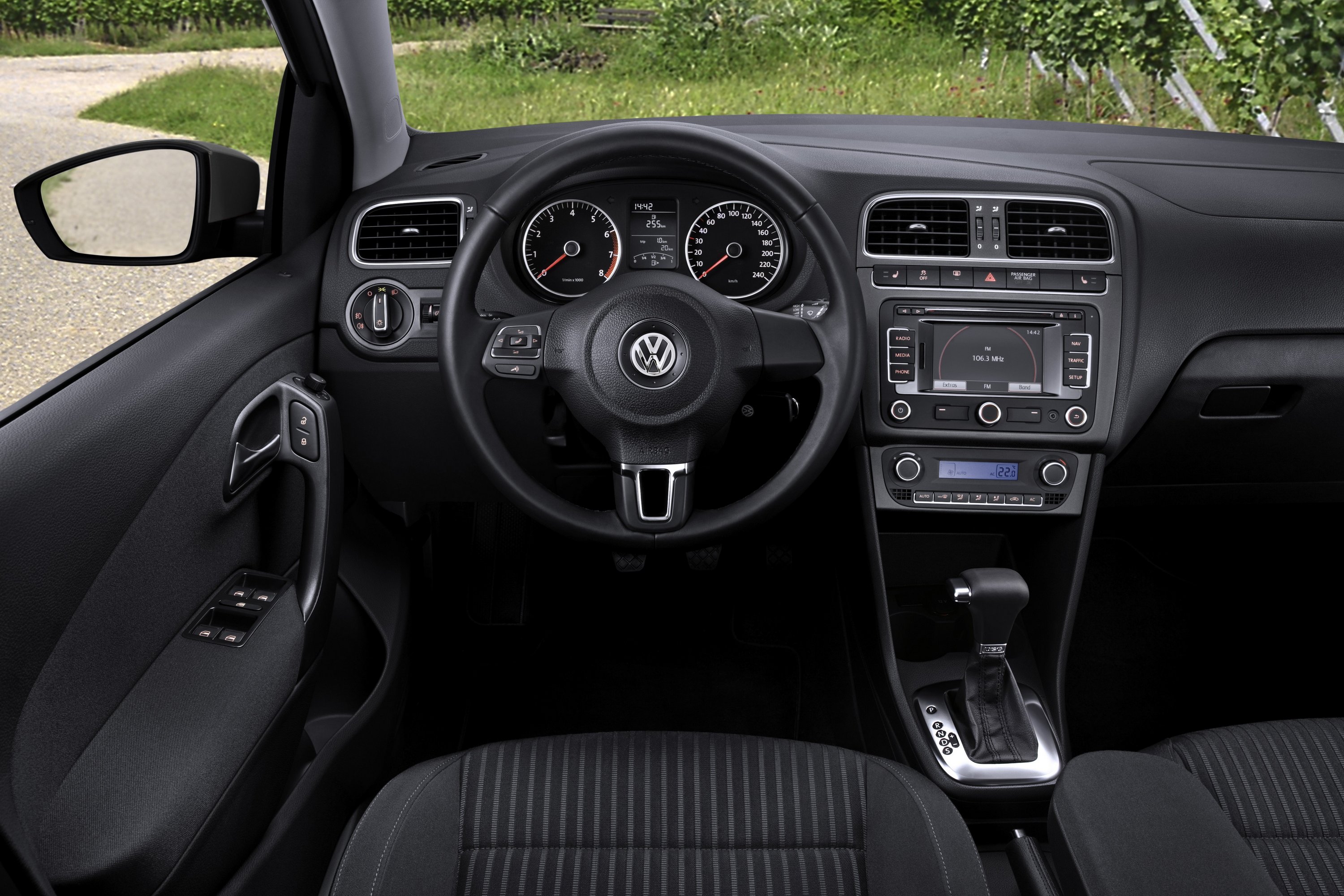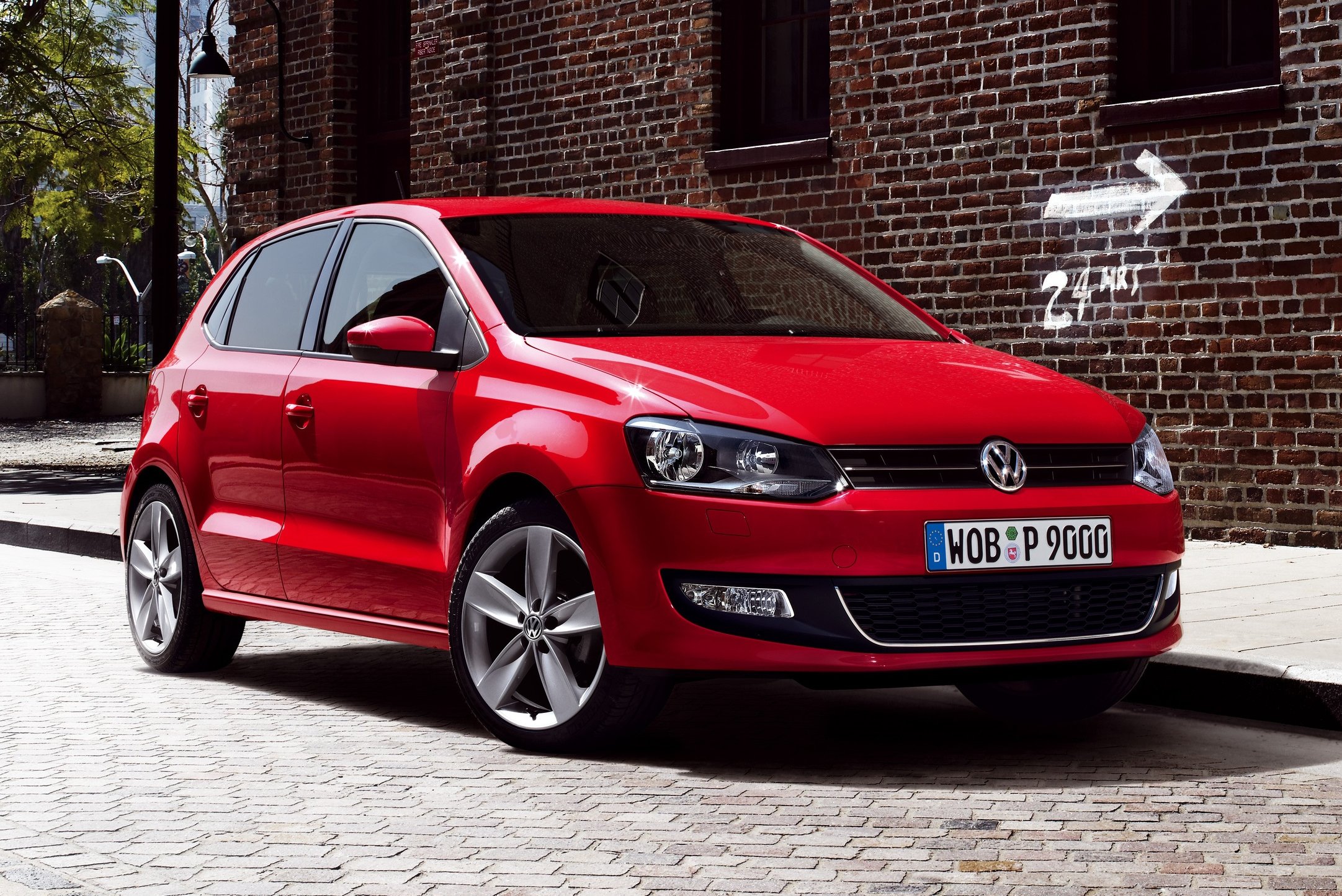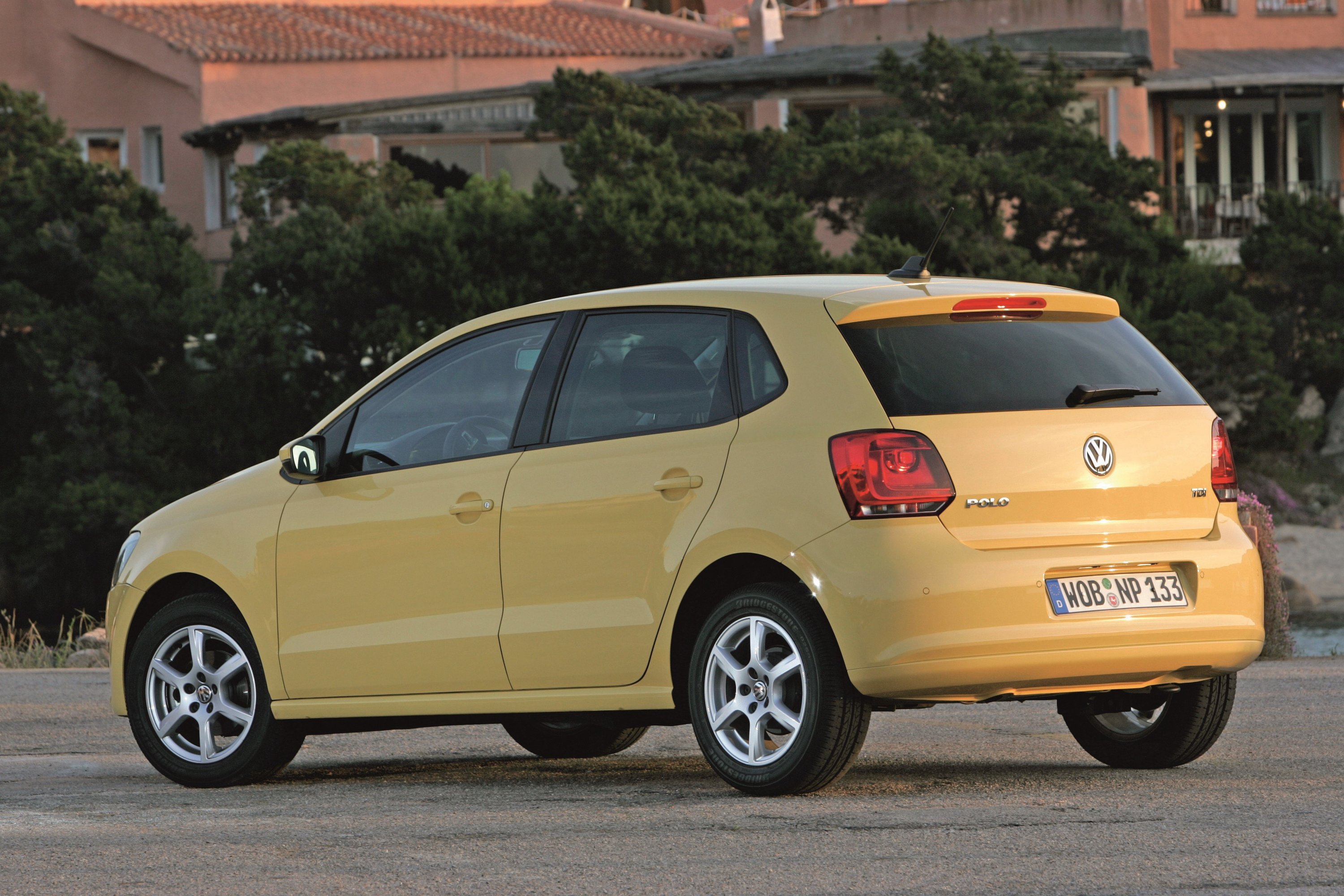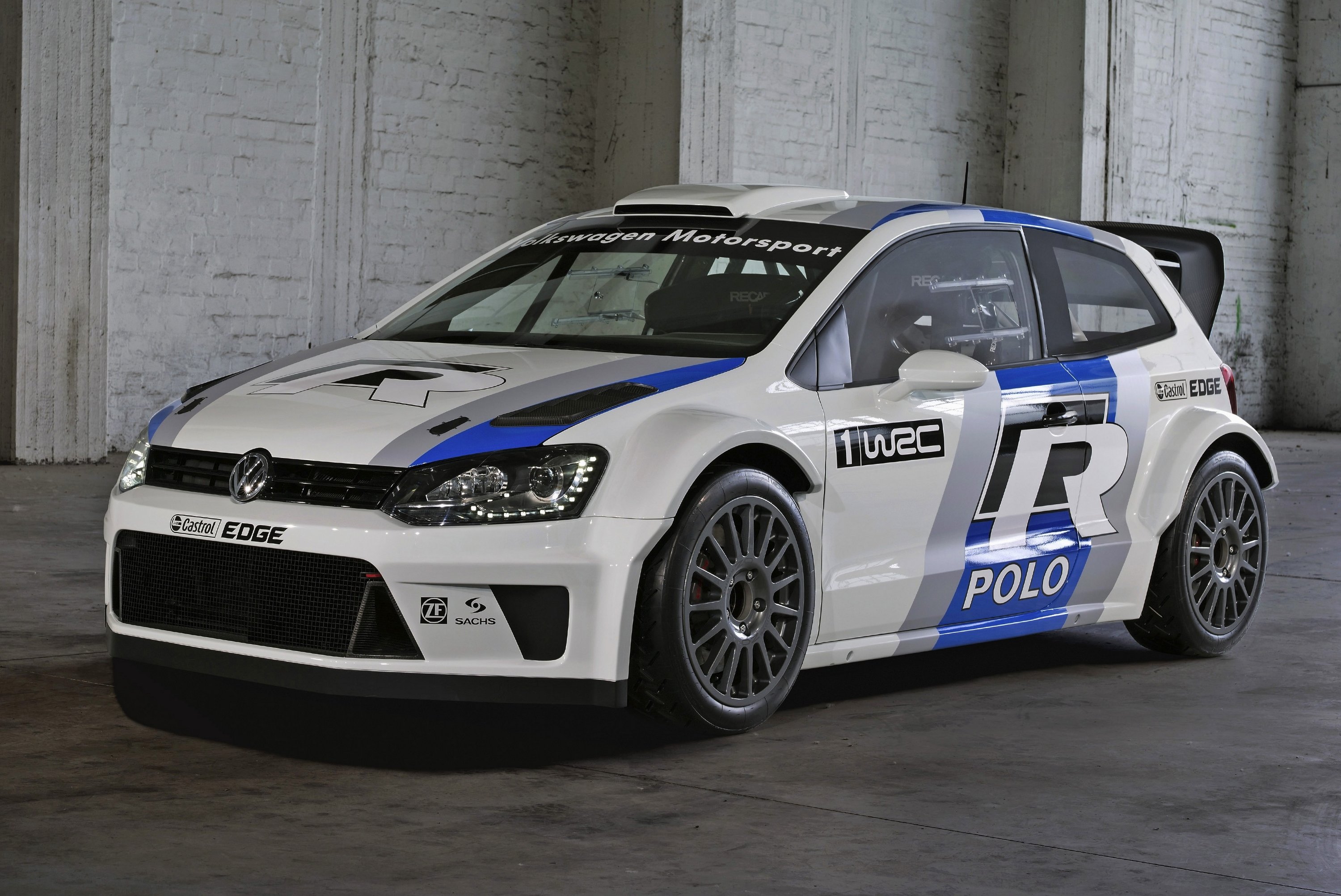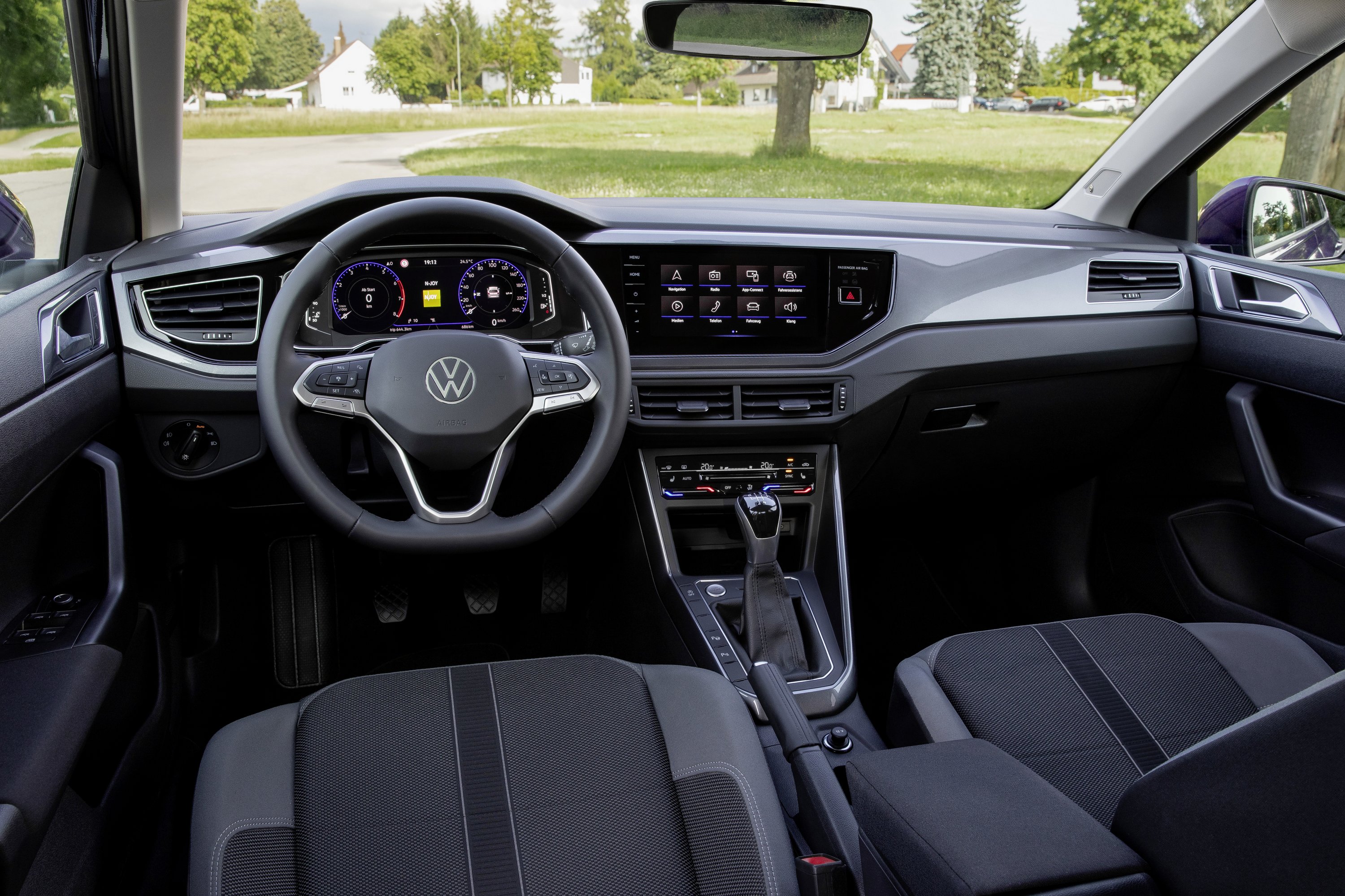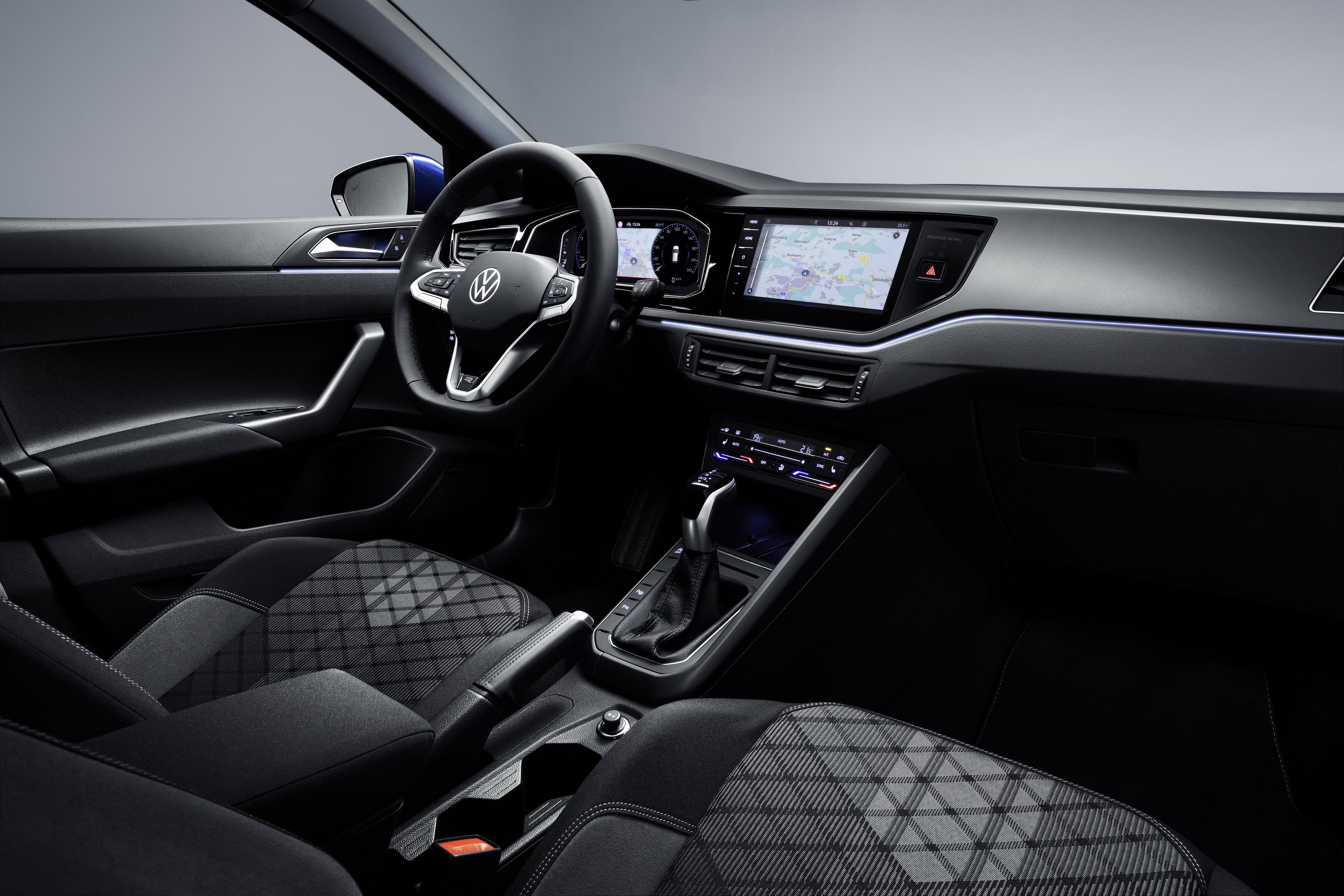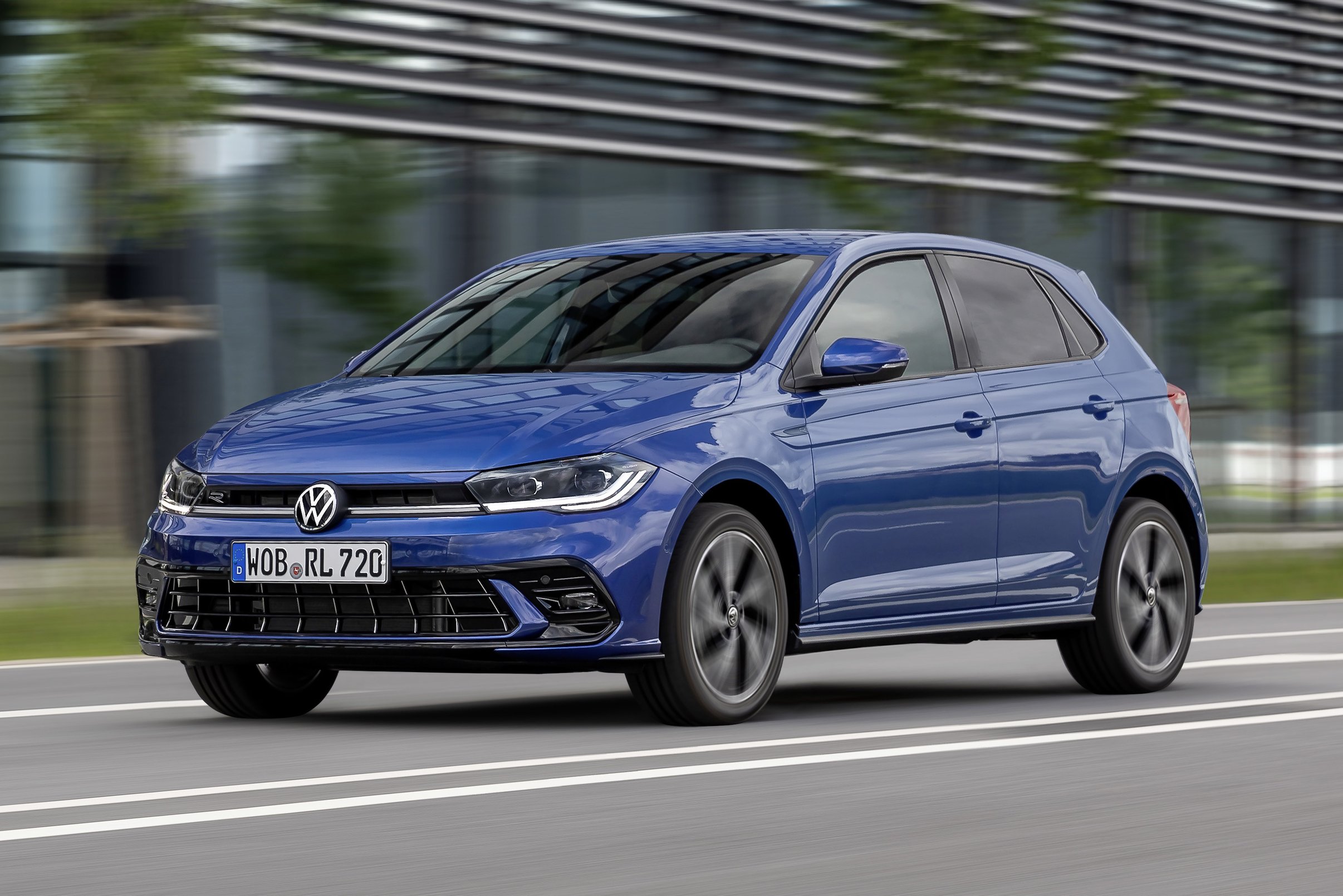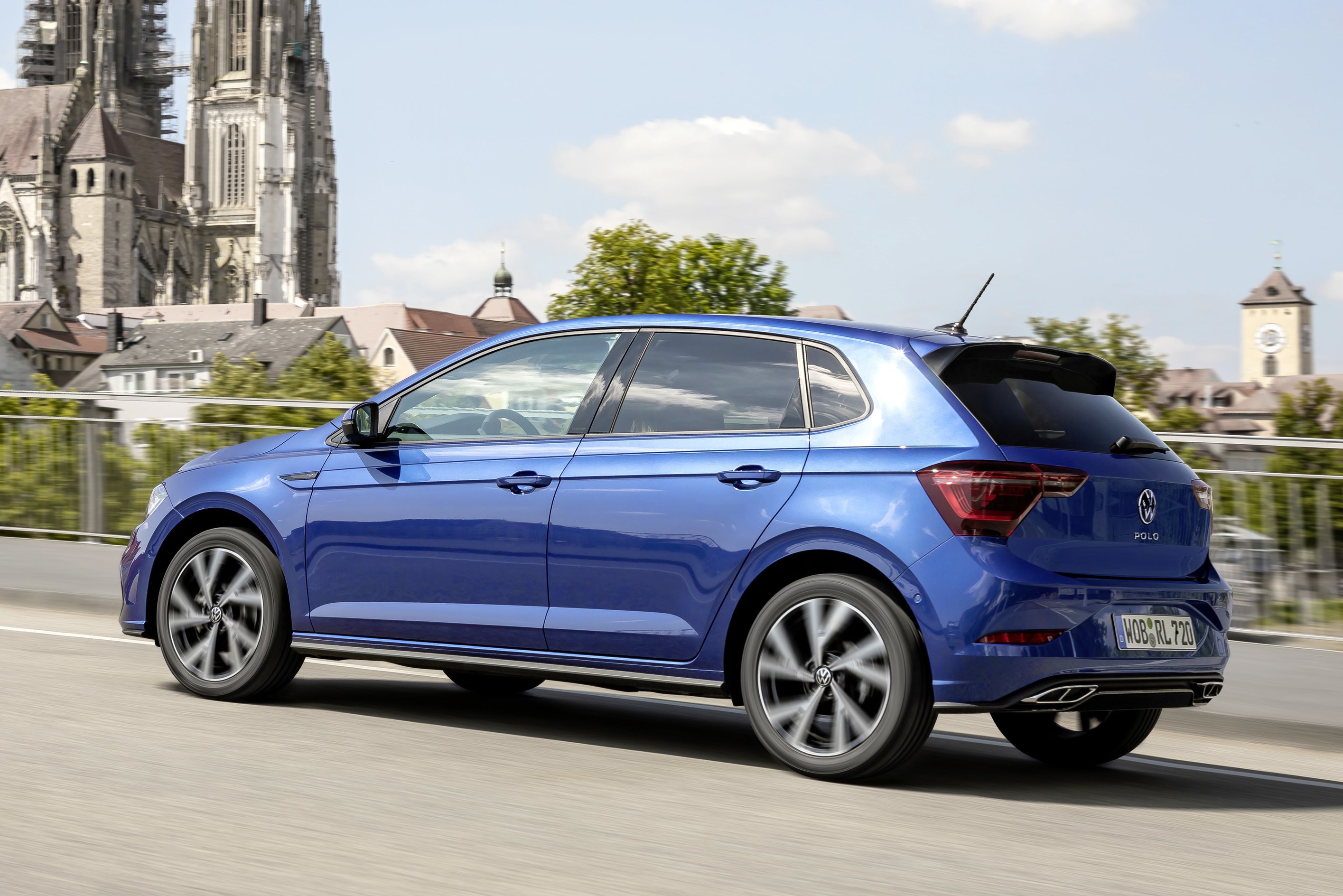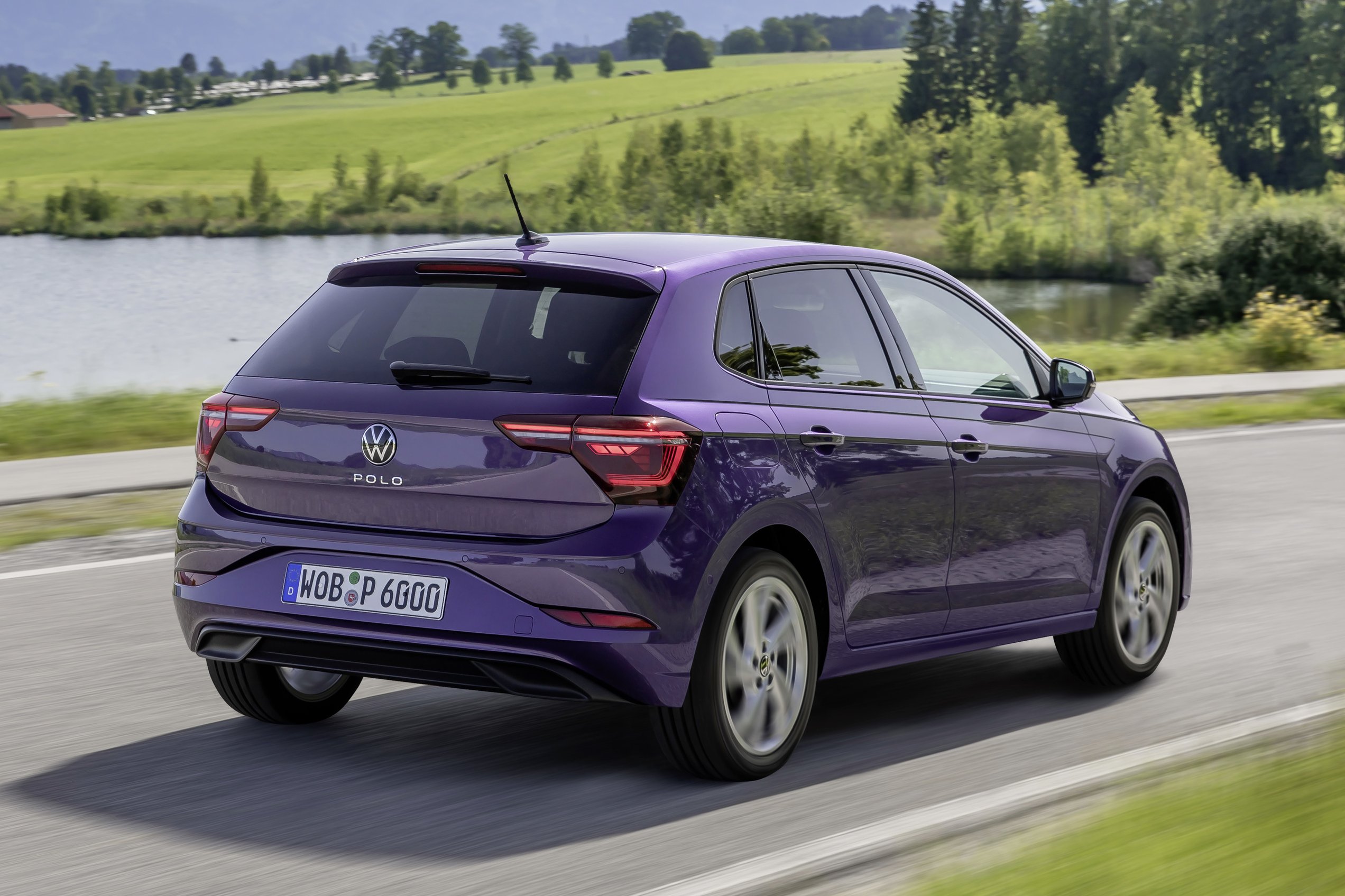After the Passat appeared in 1973, followed by the Golf a year later, Volkswagen presented the third, smallest member of the new model generation in 1975. The Polo was only 350 cm long – VW had never built a shorter car either before or since; in addition, the hypercompact Up! was also longer (354 cm).
The half-century anniversary is made especially stylish by the fact that the Volkswagen Polo was already 50 when it was born – that is, it was born as a minimally revised version of the Audi 50. However, while the idea of a premium small car did not yet heat up the market and the Audi was retired after three years, the Polo had a huge career.
Polo I (1975–1981)
Volkswagen deliberately kept the Polo’s equipment low, although customers could request two-stage ventilation, a rear window wiper and floor mats for an additional fee. The 40-horsepower, 900-cc engine was enough for a top speed of 132 km/h, in which the model’s minimum curb weight of 685 kilograms also played a role.
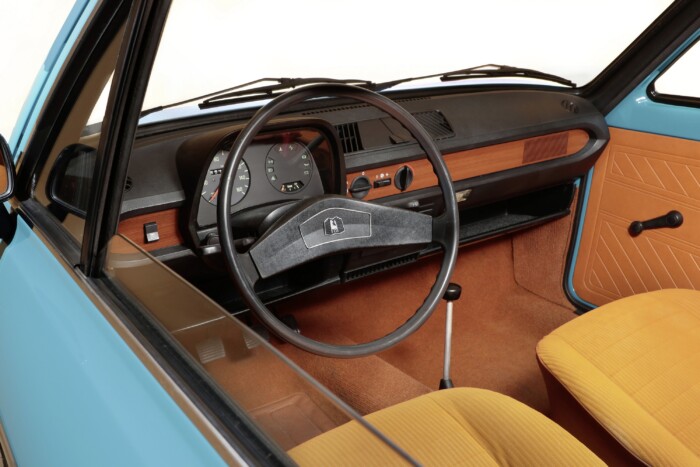
In 1977, the hatchback variant, the Derby, arrived, from 1979 the 60-horsepower Polo GT was offered, and in the last year of production, the specially tuned Polo Formel E appeared on the scene. 1.1 million units of the first generation Polo were sold worldwide. .
Polo II (1981–1994)
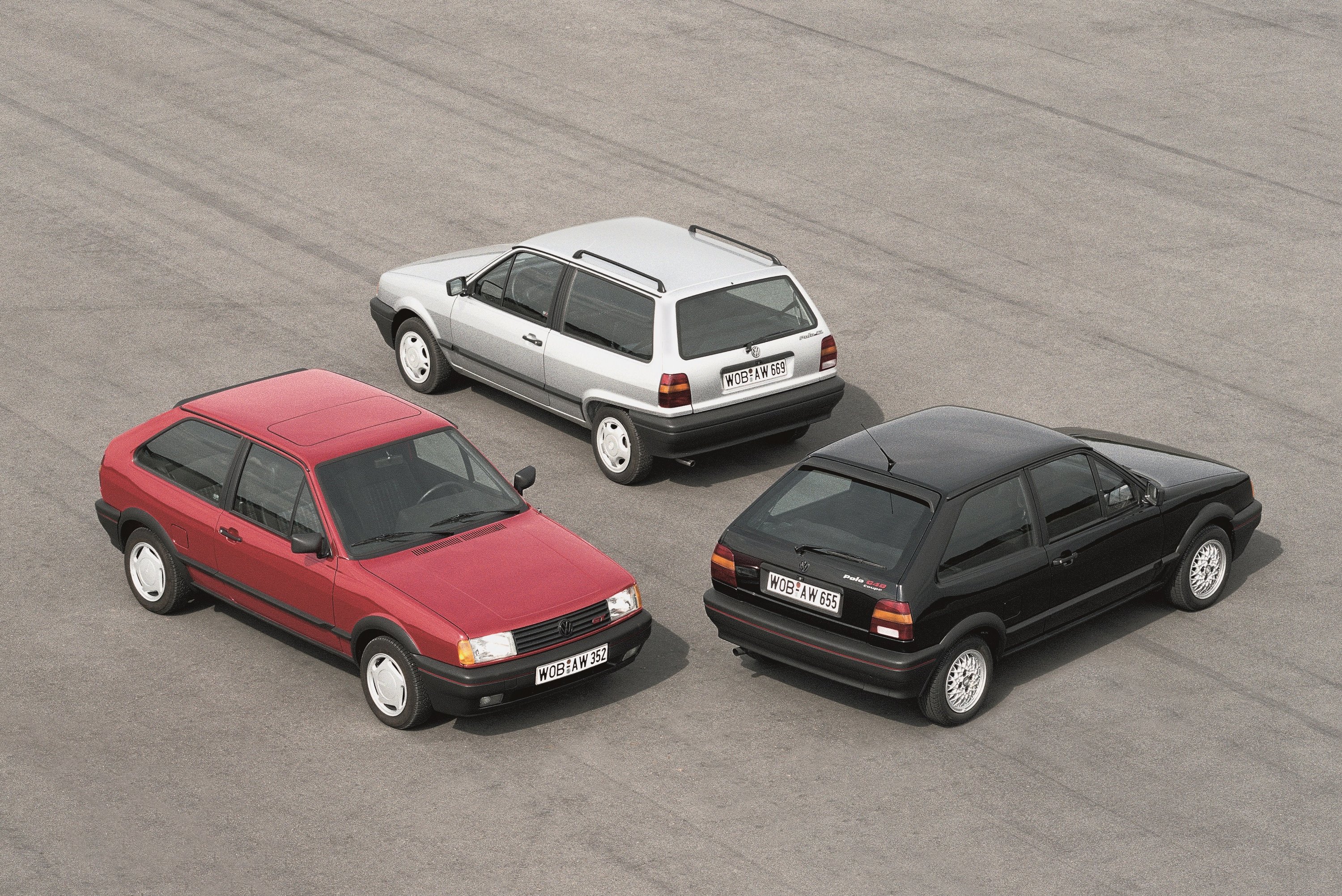
The second generation Polo arrived with a length increased by sixteen centimeters and a unique, steep rear windshield; the wagon-like body resulted in more rear headroom and a spacious trunk. The classic hatchback was left behind, replaced by the Coupé in 1982, with a decidedly slanted rear windshield.
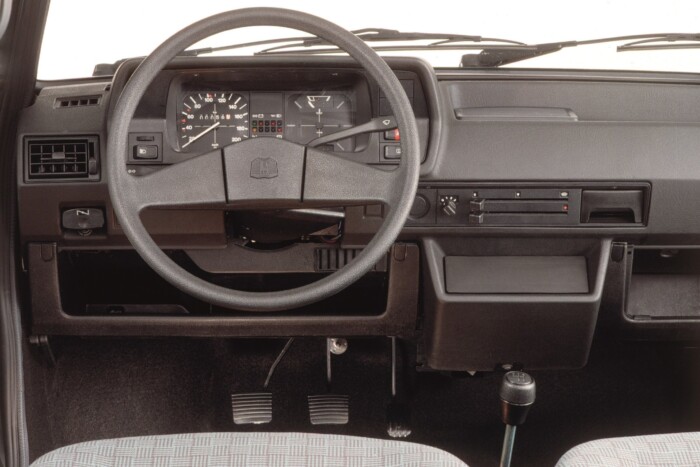
Polo (1985)
The superiority of the more powerful gasoline engines and the 45 hp diesel was necessary because the car became 10 percent heavier (770 kg). The real fireworks came in 1987, when the Polo GT 40, equipped with a 115 hp supercharged engine, appeared on the scene, a prototype of which broke the world speed record for the 1.3-liter size class two years earlier, when it accelerated to 208.13 km/h in the VW ehra- on the test track in Lessien.
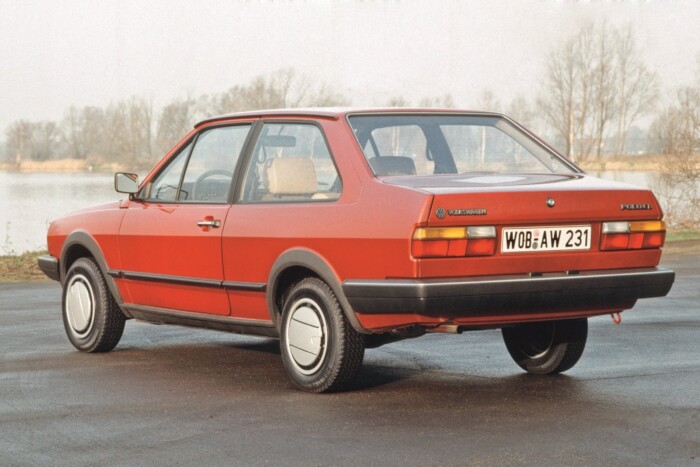
The Polo II underwent a thorough model update in 1990, its lights were changed to square ones, the separate bumpers were replaced by integrated, streamlined fittings, and the radiator grille was also redesigned. In thirteen years, 2.7 million units of the model were sold.
Polo III (1994–2001)
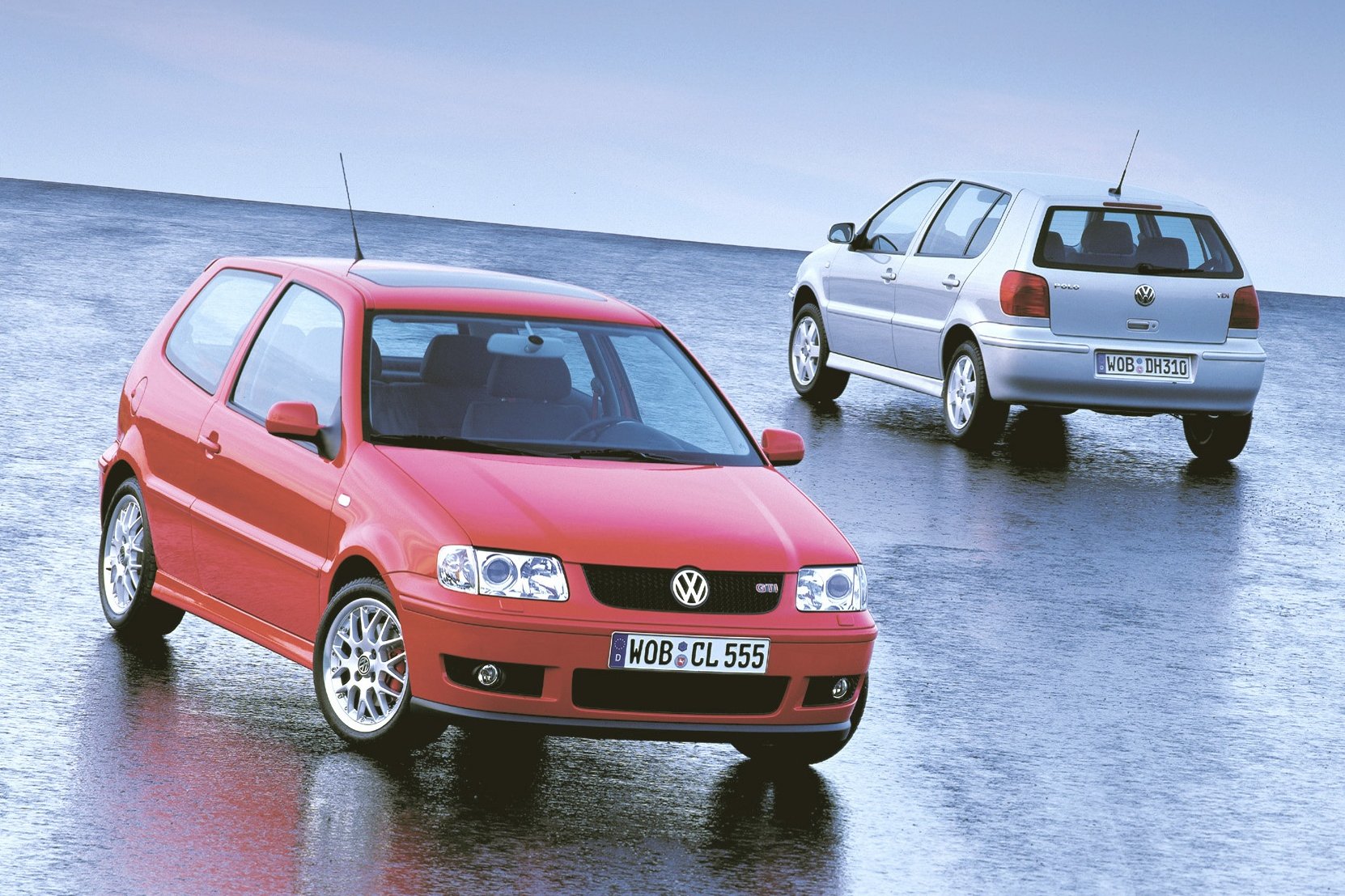
The third edition of the Polo has overtaken the Golf in size – that is, its first generation. However, it was not only the 3715 mm body and the 915 kg curb weight that hinted at growth: behind the rounded parts, we found modern technologies such as front airbags, ABS or belt tensioners.
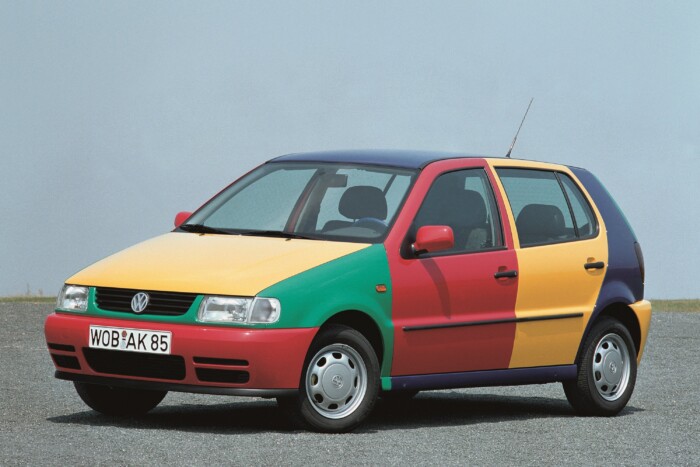
Polo with Harle (1995)
This edition was also big in terms of life: on the one hand, a limited series with a retractable canvas roof was made, and on the other hand, the Harlequin version, the most colorful passenger car in the world, was originally intended only as an exhibition display, but the world’s buying public thought otherwise.
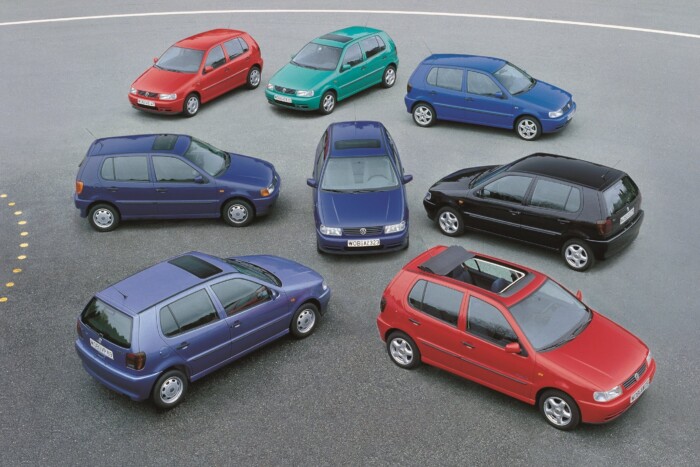
The most important benefit of the increase in size was the appearance of the rear side doors: from 1997, the Polo was also available as a five-door. A year later, the very first Polo GTI appeared, and in 1999, a more sophisticated exterior and interior design, as well as ABS and airbags, which are now offered as standard equipment, were introduced as part of a comprehensive facelift; ESP became available.
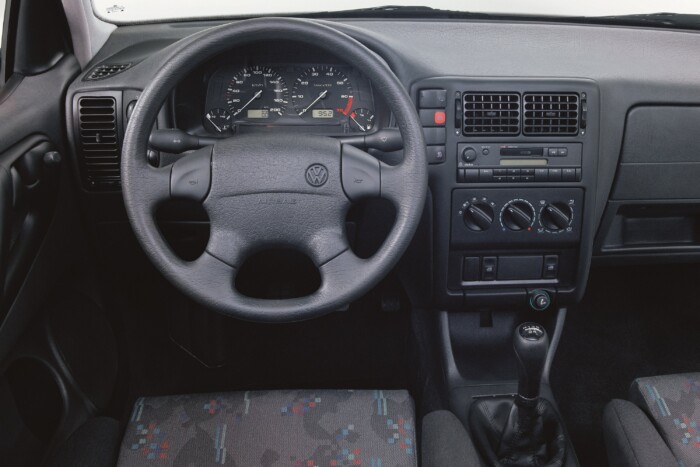
Dashboard of the Polo III before the facelift
3.5 million units of the third Polo were sold, including many station wagons (Polo Variant), which were produced from 1997.
Polo IV (2001–2009)
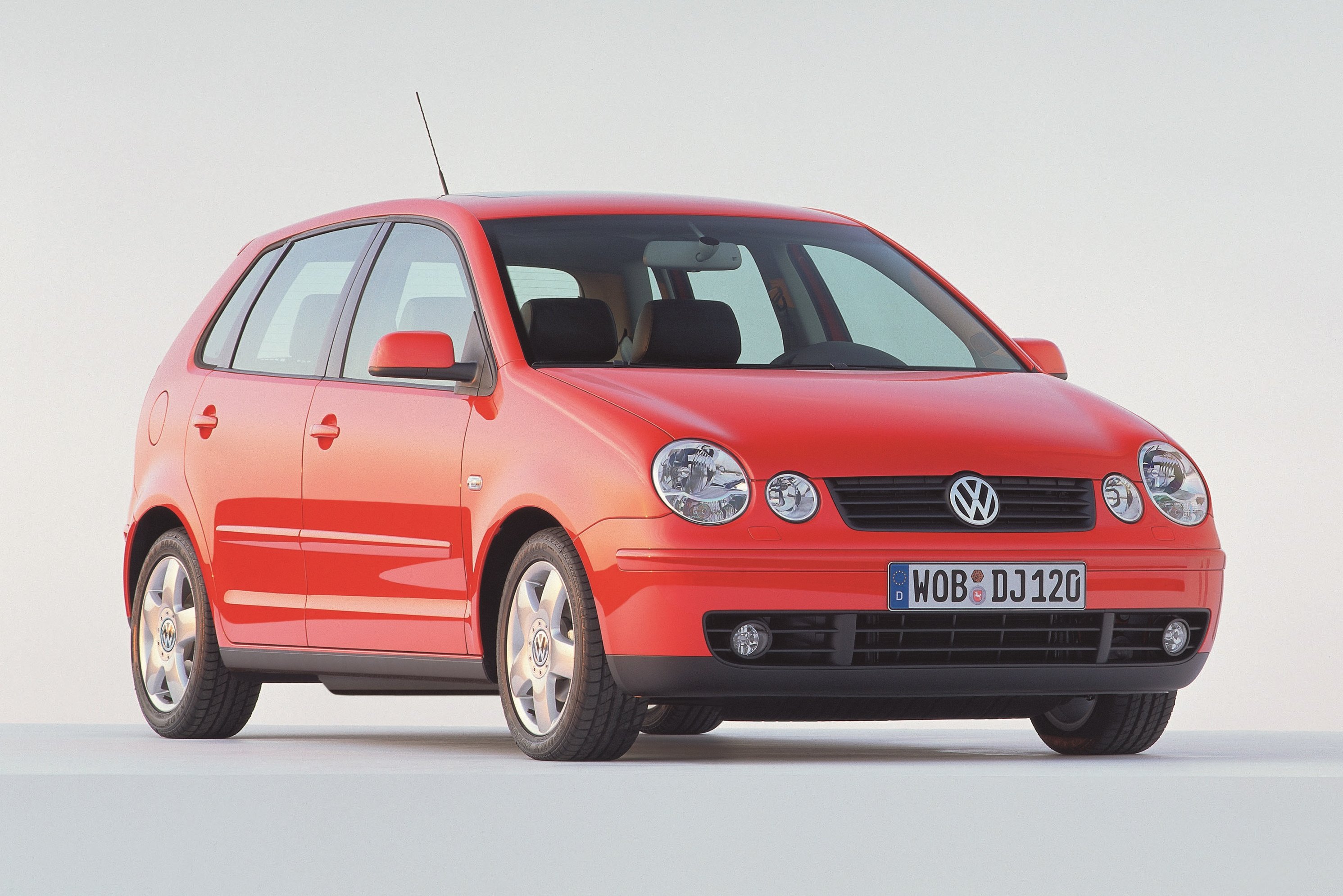
The fourth edition of the Polo started a new era in the history of the model with double round headlights and a body length of 387 centimeters. For the first time, three-cylinder engines appeared in the range, and the performance of the sporty models reached 150 (GTI) and even 180 (GTI Cup Edition) horsepower.
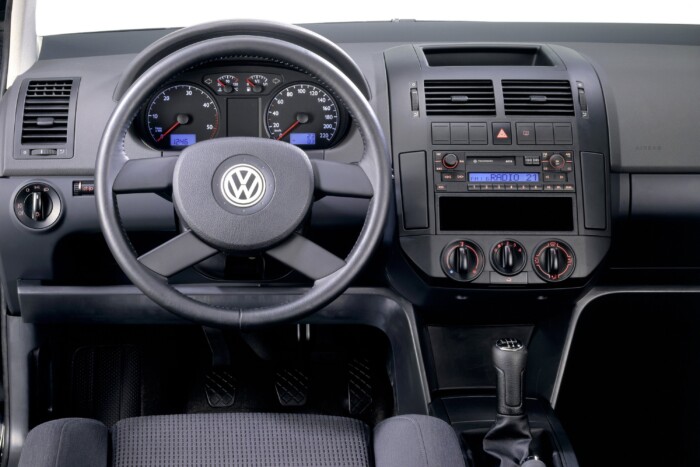
The station wagon was discontinued, replaced by the sedan, and from 2006 the CrossPolo with a raised belly and wrapped in a circle added color to the range. From 2005, the double headlights moved under a common hood.
A total of 4.1 million units of the fourth Polo were produced.
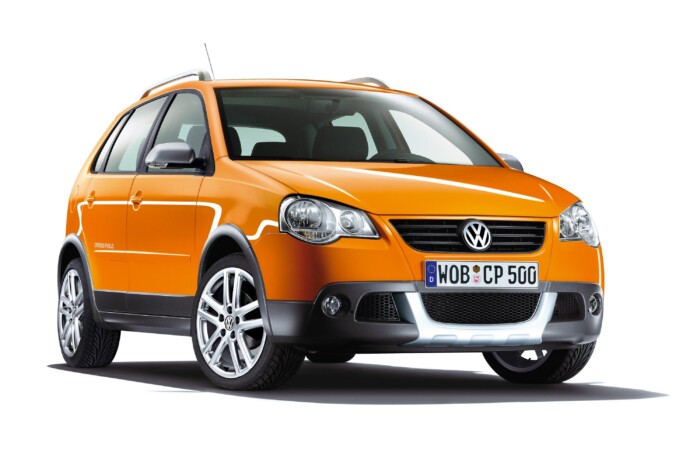
Polo V (2009–2017)
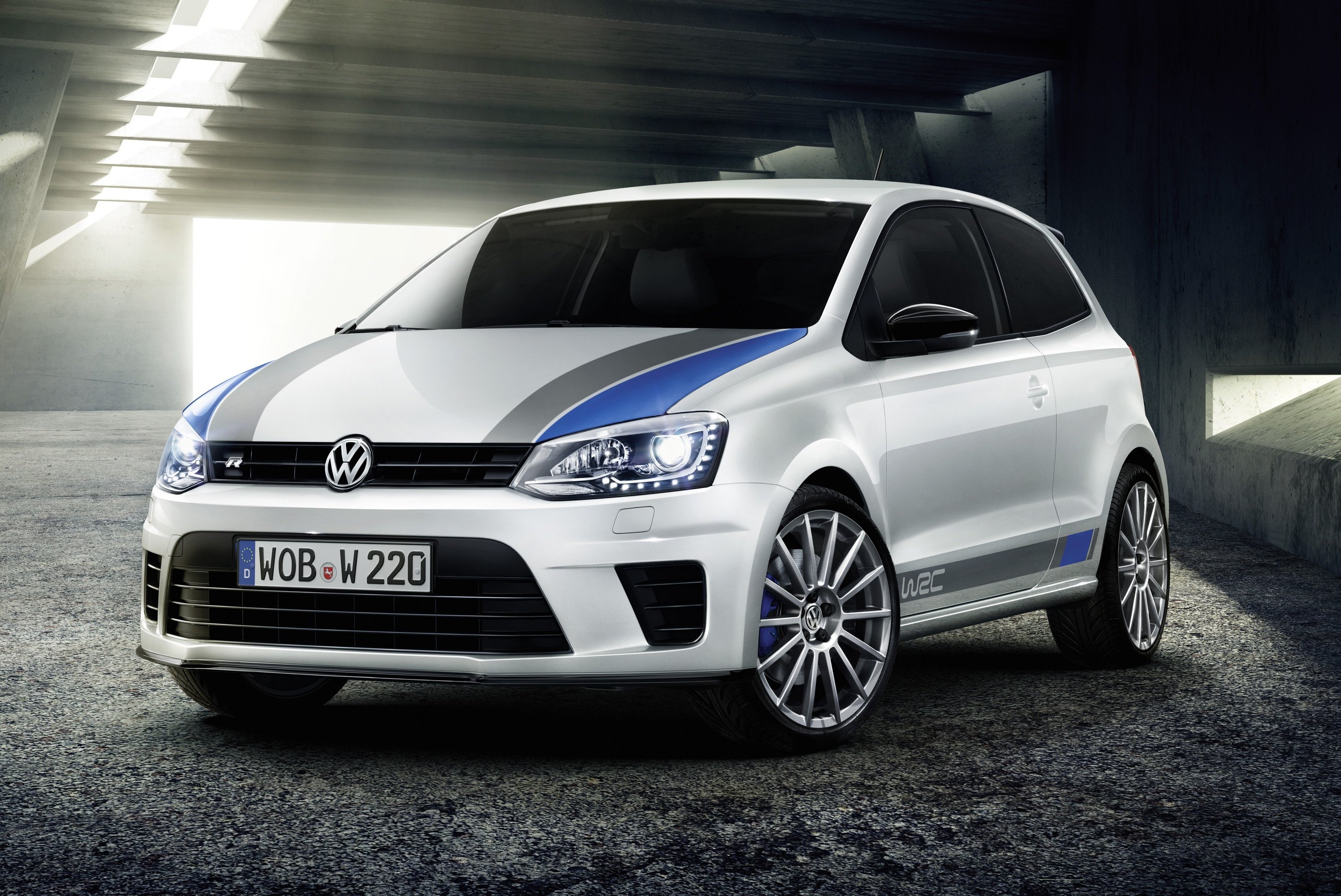
The fifth Polo just didn’t reach the four-meter length. The motorization ranged from the Polo BlueMotion diesel, promising an average consumption of 3.3 liters, to a 220 hp turbo engine – the latter was installed in the Polo R WRC Street limited series, with which VW Polo’s world rally championship titles (2013, 2014, 2015, 2016) were celebrated.
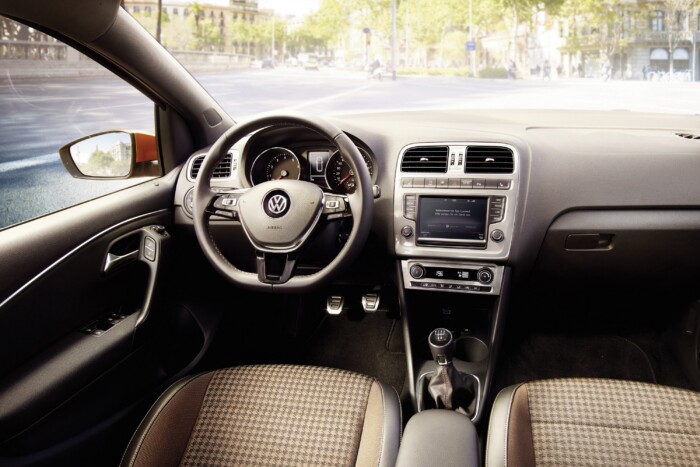
In addition to a prettier appearance, the 2014 model update brought more economical engines and safety and driver support systems carried over from the Golf. With a turnover of 6.3 million units, this has been the most successful Polo series to date.
Polo VI (2017– )
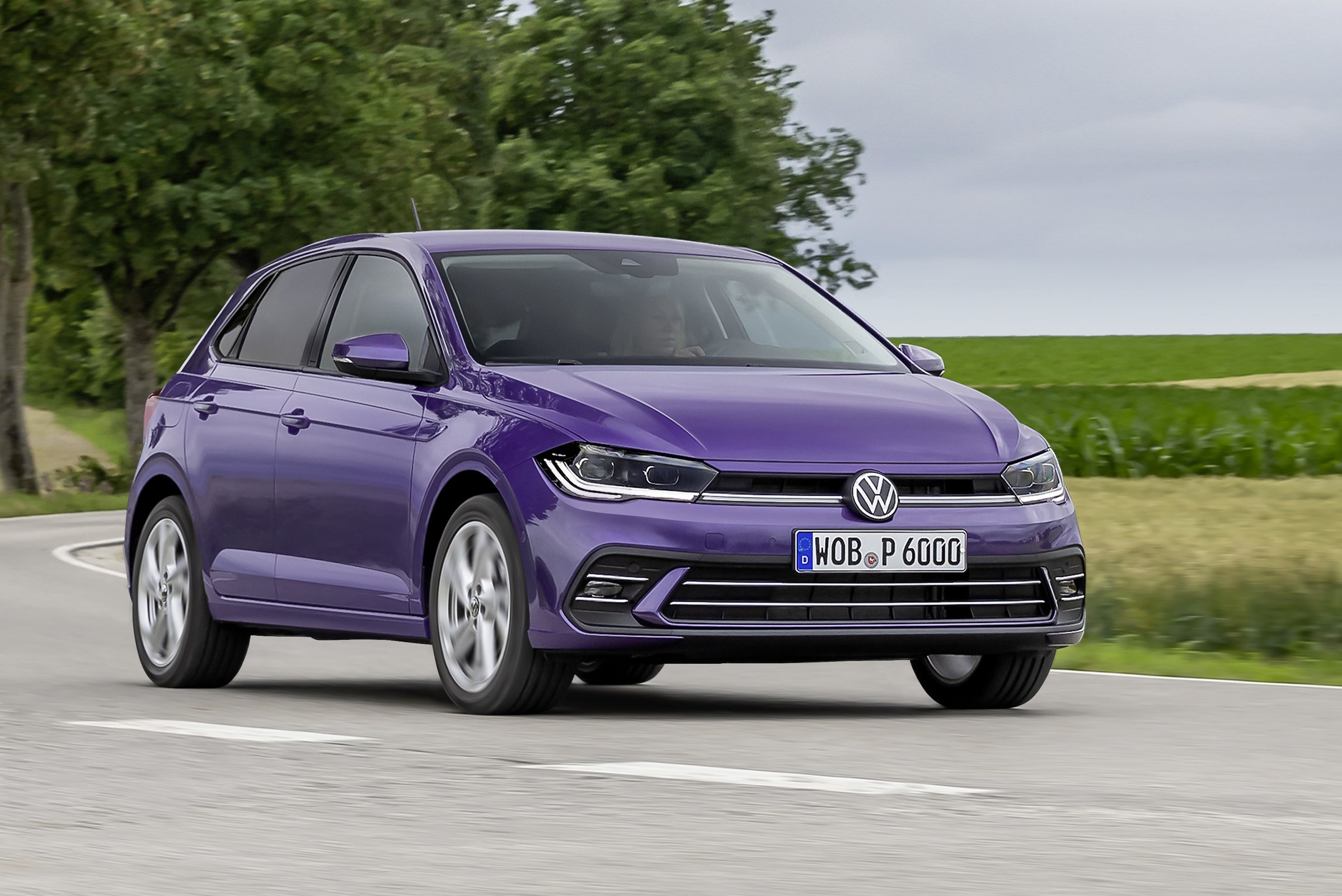
The sixth, current series was already based on the Volkswagen MQB modular floor plate, which brought a series of modern electronic driver support and accident prevention systems to the small car. The digital instrument cluster is also a benefit of the MQB. The current Polo has a length of 4074 mm and the ready-to-run weight starts at 1143 kilograms, depending on the version.
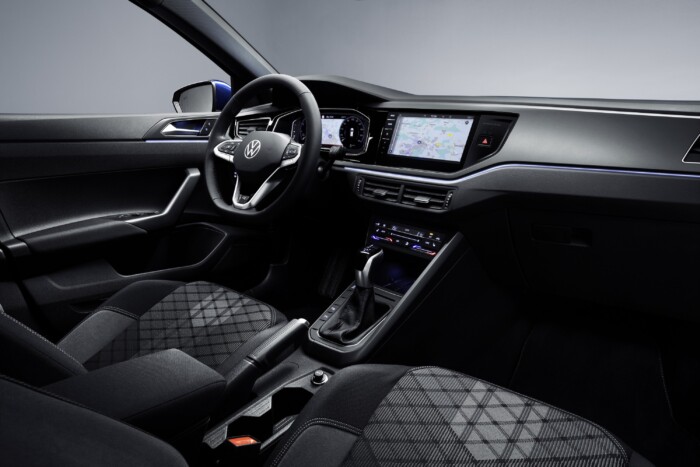
In 2021, it received a spectacular model update with LED headlights (in an anti-dazzle, adaptive matrix LED version as an option), and the IQ.DRIVE Travel Assist technology, which brings partial self-driving capability, appeared in the range. In the summer of 2021, the new Polo GTI arrived with 207 horsepower and 0-100 km/h acceleration in 6.5 seconds; And in 2023, the Polo GTI Edition 252 was introduced, which celebrated the quarter-century history of the Polo GTI.
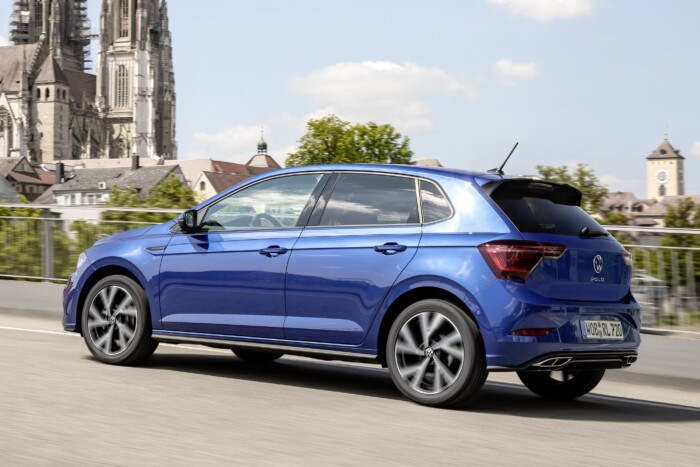
2.5 million units of the sixth edition Polo have been sold to date, the story continues.
Source: www.vezess.hu


